Achtung! Achtung! In the air La Xnumx
Quite often they write that for reworking the LaGG-3 in the Gu-82 Gudkov used the documentation for the powerplant from the near-bomber Su-4 (modification of the Su-2). This may be so, but “material evidence” on this score could not be found.
Today, the Gu-82 powerplant is no longer important, but since it is often compared to the La-5, you should give it a little attention. On the hood of the motor there were front folding blinds, and the middle part consisted of four covers connected by ramrods. These covers were closed with only one “Fae” type lock.
To regulate the area of the cooling air outlet around the bonnet, there were skirts with a cutout for exhaust manifolds that protruded beyond the bonnet. The carburetor suction nozzle had a rectangular cross section and was located above the hood.
Maslobaki preserved from LaGG-3. The masloradia torus was placed in place of a water radiator between the fourth and fifth frames of the fuselage, while the area of its entrance was regulated by a throttle valve.
Two Gu-82 fighters built the 1941 of the year in the factory at 301 number in Khimki near Moscow, shortly before the enterprise was evacuated to the east of the country. The first of them on flight tests showed the maximum speed of 573 km / h, which was slightly less than that of the Lagg, but the range was higher. The armament of the first Gu-82 was supposed to consist of four machine guns (for a pair of aircraft and ShKAS), but it entered tests without ShKAS, and the BSy did not have barrels. On the second machine, we provided for two 20-mm ShVAK cannons and a pair of BS machine guns.
On the eleventh of October of the same year, Gudkov informed Stalin:
Moreover, the machine has gross errors and defects in serial production of the Gorky plant, due to which the serial “lagg” against the experimental machine lost 45 — 55 km / h. Therefore, if we correct and eliminate the defects of the serial machine, then we will have a maximum speed with the engine M-82 615 — 620 km / h.
At present, I am conducting a whole range of developments, which suggest that I will be able to increase the speed of my car from M-82 to 600 km / h, this without taking into account the elimination of defects in serial production ...
After staying at the front, I clearly understand that we need to have an aircraft equipped with an air-cooled engine, because using fighters with a liquid-cooling engine, like in air battles, and especially when attacking enemy ground units, brings a large percentage of casualties composition and material parts, due to the great vulnerability of the water system of the motor ...
Having the fighter with an air cooling motor, we will not have such losses, since the survivability of the air cooling motor is nine times more.
Based on these considerations, I ask you to gain time, not waiting for the end of the test machine, to allow me to introduce my plane with the M-82 at one of the production plants that produce LaGG aircraft ... "
It seems that the letter did not reach the leader. Then it was not until the new aircraft. German approached Moscow, industry and various institutions, including the Air Force Institute, were on the way to the east. Therefore, the response to these proposals was delayed for almost two months. Meanwhile, Mikhail Ivanovich hit the "millstones", being between Yakovlev and Lavochkin. It should be emphasized here that Lavochkin found many well-wishers in the NKAP, starting with the People's Commissar. As a result, it turned out that Gudkov was not given a move, and the people of Lavochkin gradually mastered the plans of Mikhail Ivanovich.
By order of Commissar of 5, December 1941, Gudko-va was sent to plant number 21 for introduction into the Gu-82 and LaGG-3 series with an anti-tank gun (Gu-37). But this appointment did not take place. They say that when Gudkov arrived in Gorky, Lavochkin did not sign his pass, leaving his former co-author behind the gates. Mikhail Ivanovich with his projects was forced to return to Moscow.
In January, 1942, the People's Commissar A.I. Shakhurin suggested I.V. To Stalin to build a small series of these machines for military tests, having created for this purpose a pilot production in Moscow on the territory of one of the evacuated factories, so as not to disturb the production of the LaGG-3 serial plants.
On 11 February 1942 of the year, as follows from the letter of the Deputy Chief of the Main Directorate of the Air Force Leshukov to the NKAP, the second Gu-82 did not rise into the air, although the customer insisted on transferring it to the Air Force Armament Scientific Test Ground (NPC AV Air Force) where was the test aircraft weapons. But Gudkov did not have a serial plant, and there were no such connections as Lavochkin’s. Apparently, these circumstances caused the further work on the Gu-82 to stop.
Nevertheless, the relevance of installing the M-82A engine on LaGG-3 did not disappear. I must say that this issue was under control in the People’s Commissariat aviation industry. Moreover, the design of the design bureau of plant No. 21 for the fourth quarter of 1941 included this development with the date of manufacture of the machine in February next year. But, apparently, there was no acute need for this yet, and by the end of 1941 they prepared only 43 percent of the groundwork, since the main stake was placed on the LAGG-3 with the M-107P engine. The need for a car with a star engine arose a little later, when it became clear that the mass production of LaGG-3 with M-107P was in jeopardy.
The task for LaGG-3 with M-82 with the maximum speed at the ground 540 km / h, and at the height of 6400 m 625 km / h passed on 1942 year. At the same time, the speed range (on the 0,9 mode from the maximum speed) should have been at least 800 km, and the period for submitting the vehicle to state tests - 1 September. Although this information is contrary to the memories of CM. Alekseeva about creating the future of La-5, yet familiar with them is worth it.
It was the end of 1941, a very difficult time. The workers who assembled the "laggs" were wearing who in what: in quilted jackets, with earflaps, felt boots, boots. We often spent the night there, in the workshops, on the wings of the aircraft. The situation is rather grim. Yakovlev dressed his workers in white dressing gowns, laid a carpet along the Yak-7 line, and invited a cameraman to the factory who shot the entire assembly process "yaks." The resulting film designer sent to Moscow. I do not know who and when watched this tape, but in the first days of January 1942 of the year was followed by a decree of the State Defense Committee, ordering to remove the LaGG-3 from the series at the factory number 153 and launch the Yak-7 fighter instead.
And in December 1941, Stalin summoned Commissar A.I. Shakhurin, his deputy, P.V. Dementyev, and asked them to endorse the government decree on launching the Yak-7 series not only in Novosibirsk, but also at plant No. 21, where OKB Lavochkin. Shakhurin categorically refused to endorse this resolution: suppose that, they say, Yakovlev will first set up the series at plant number 153, and then it is already possible to give him the plant in Gorky. Stalin agreed with his arguments.
Immediately after this, Dementiev summoned Lavochkin to Moscow and told him:
- That's what, Semyon, a thunderstorm on you. Your days are numbered. You must now take very unusual steps to change the attitude of the military and the government towards the LaGG-3 aircraft. I think it will take Yakovlev at least two months to arrange for the regular production of his aircraft in Novosibirsk.
In the waiting room, meanwhile, with his “sores”, Chief Designer A.D. Shvetsov. Lavochkin told him about the conversation with Dementiev, and he complained about his problems:
- Motor M-82 is not needed by anyone. Now the plant has accumulated more than a hundred ready-made, with the acceptance of the military representative, motors, and no one takes them. I have with me a set of drawings, on, look, maybe it will turn out to put it on your fighter. (In 1941, Plant No. 19 produced 412 M-82 engines. - Note aut.).
Lavochkin took the drawings, but said that all his hope was for the new Klimovsk engine M-107 ...
Lavochkin returned to Gorky, gathered his closest assistants, explained the situation and expressed his opinion: the M-82 engine, for a number of obvious reasons, could not be delivered to the LaGG-3 without major aircraft modifications. It is necessary to install the motor M-107. So decided. All hope was that Klimov will be able to bring the motor and we will be able to eliminate the flaws that have appeared on the first LaGG-3 M-107.
At this meeting, for some reason, it seemed to me that the installation on our M-82 fighter was not a hopeless matter. I asked Lavochkin for permission to take two or three people to help and work with the engine. Lavochkin then said:
- No more than two or three.
As assistants, I chose the head of the armament brigade, Ivan Artemovich Shabanov, and the head of the motor brigade, Konstantin Ivanovich Slepnev.
After the meeting, our design bureau was completely reorganized. Lavochkin decided to allocate a special design department to implement the installation of the M-107 on the LaGG-3. He managed to get in touch with Klimov, and he promised that in about a week he would have two new finished M-107 engines ready: one for Yakovlev and the other for Lavochkin.
The week passed in a nervous environment, in various searches. In Moscow for the promised engine sent the chief mechanic Romanov. After some time, Romanov telegraphed to Gorky: people came from Yakovlev and took both engines, despite the objection of Klimov. After that, Lavochkin went to Moscow to look for the truth:
- I'm going to complain to the Central Committee, mobilizing the People's Commissar! This mess!
And on the day Semyon Alekseevich left for Moscow, I asked him to sign a telegram to Shvetsov asking him to send us a mock-up engine M-82. Lavochkin did not have time to leave, after a couple of days flew Li-2 and brought two engines - a mock-up and flight. They were accompanied by their mechanic and deputy Shvetsova Valentin Ivanovich Valedinsky. We unpacked the box with the model M-82, and I asked the chief engineer of the plant, Boris V. Kupriyanov, to transfer to the workshop No. 40 the LaGG-3 aircraft, to which the engine had not yet been installed. To this plane, which “began” with a firebreak, we brought a mock-up M-82 suspended on a crane.
At the meeting with Lavochkin, the star-shaped engine was rejected for three main reasons. First, he weighed 250 kg more than M-105, and it was not clear what would happen with the alignment of the aircraft. Secondly, the diameter M-82 was 1260 mm, and the width M-105 - 798 mm. It turned out some kind of "tadpole". It was necessary to somehow alter the elliptical section of the forward part of the fuselage "Lagg" on the round and not to spoil the aerodynamics of the machine. A thought arose of itself - it was necessary to make a new fuselage - and there was no time for that. Third, how to be armed? After lessons in Spain at a meeting with Stalin, it was decided that the fighter must necessarily have gun armament. But the wing of the LaGG-3 is occupied by tanks, and there are no synchronous guns at the factory. True, in the last months of the release of the I-16 fighters at the plant number XXUMX, B. G. Shpitalny had to make about two dozen synchronized ShVAK cannons.
And that's how these problems began to be solved. When we brought the model M-82 to the LaGG-3 fire barrier, the center of gravity of the engine was closer to the center of gravity of the aircraft than the M-105, and the “extra” 250 kg had almost no effect on the centering; what a trifle of equipment. All the heads of workshops, several designers, the chief engineer of the plant were seated around the plane. All questions with the delivery of the necessary materials were solved very quickly. They brought wooden slats, put them to the outer contour of the motor and to the fuselage. It turned out that if you put false sides on the fuselage, then to the fifth frame, you can smoothly reduce the contours of the round fuselage to elliptical. And the wooden fuselage LaGG-3 is the best suited for such a remake.
A huge role in the creation of a new fighter played Valeinsky. We couldn’t apply the classical scheme of installation of an air cooling motor with a skirt for the exit of cooling air without a serious alteration of the fuselage. Then along the sides of the aircraft, to the left and to the right, they made large, about 700 mm, scoops through which the cooling air exited. Opposite the scoops, the temperature of the cylinder heads was normal, and from above and below they overheated. Valeinsky then began to redo the deflectors of each cylinder, and he managed to achieve a uniform temperature over all the cylinders. It was one of the decisive factors in creating a new fighter.
By the time Lavochkin arrived, they had time to sew one side of the plane with a false board over the old skin, without changing anything else. Put the sector of the rails, and on them - plywood. The result was a round fuselage. Lavochkin realized that the plane was working, and had already mobilized all the design bureaus for work on M-82. The team worked in the most direct sense, day and night, realizing that the future of the OKB largely depends on the success of the case. But when the plane was almost ready, the T-bill issued to transfer plant No. XXUMX to Yakovlev and switch to the production of Yak-21 fighters. Lavochkin and his OKB were ordered to relocate to Tbilisi, to plant number XXUMX named after Dimitrov. Yakovlev did everything surprisingly fast. We didn’t have time to come to our senses, and a train was already sent to the railway branch of the plant for loading our equipment. Semyon Alekseevich told me:
- Semyon Mikhailovich, my dear, I am very grateful to you for everything, but I have no one but you to send to Tbilisi to organize the reception of our team. I beg you to go to Tbilisi and wait for me and the arrival of the train ...
In March 1942 of the year, even before my departure to Tbilisi, the LaGG-3 M-82 was rolled out to the airfield (an experienced LaGG-3 built the 21 in March of the 1942, and it was broken in the accident of 12 in July of the following year. - Auth. Note .), and the factory test pilot, GA. Mishchenko performed on his first flight.
Immediately revealed a serious drawback - the oil was very hot. Oil radiator set from M-105, but it was not enough. It was impossible to fly. They tried to eliminate overheating by expanding the tunnel of the oil radiator, slightly increased the deflection of the scoop. Tried to fly at dawn, so it was cooler. Mishchenko made a circle over the airdrome and, getting out of the cockpit, said: - Already went off scale ...
Meanwhile, information about the new fighter reached the T-bills. Valeinsky reported on the work of Shvetsov, and that one - in his regional committee of the party, whose secretary N.I. Gusarov, like the secretary of the Gorky Regional Committee M. I. Rodionov, reported to the Central Committee. He gave information on his line and the military representative of the plant ... "
Thirty years ago, a small book was published, perhaps even a brochure by P.Т. Ostashenko-wah “Derzskie starts” about the works of S.A. Lavochkin, which also spoke about the creation of La-5. Curiously, there are fragments of entries from the diary of Semyon Alekseevich, apparently related to the beginning of 1942 of the year. The author did not meet such a document, and therefore, with your permission, dear reader, I will give these notes illustrating some ways of creating the future of La-5.
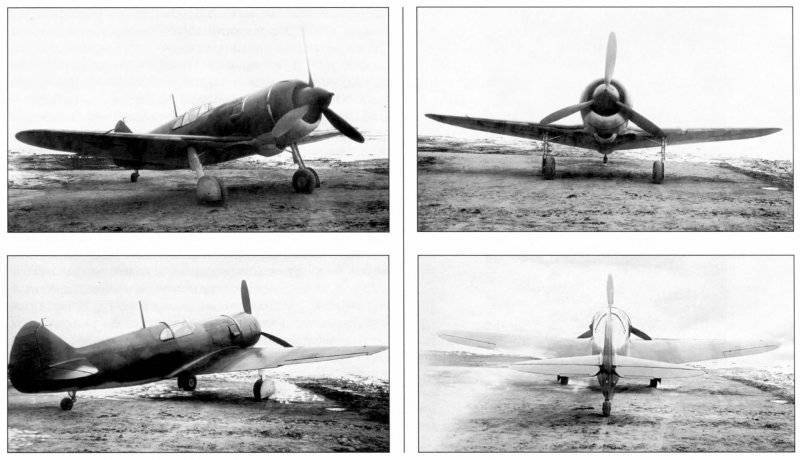
Experienced LaGG-3 with M-82 engine on joint tests of the NCAP and the Air Force. May — June 1942 of the Year
It can be assumed that after the first races of the motor on the fighter LaGG-3, Lavochkin wrote in a notebook:
There are discrepancies with the story of Alekseev, because the memory of a person is not a completely reliable “tool”, especially after half a century.
As you can see, the future La-5 was conceived with very powerful weapons - four guns, and rose into the air - with two guns. Already during the factory tests in a notebook, Lavochkin had an entry:
And when, after the first flights at the stage of state tests, the need for finishing the machine was revealed, another entry appeared: “To change the engine venting system, transfer the oil tank from the cabin to the fire wall, improve the gas control system, flaps”.
So gradually formed the appearance of the future La 5.
On April 13, a telegram signed by Deputy Commissar A.S. Yakovlev, Deputy Commander of the Air Force A.K. Repin, plant manager No. 1942 Gostintsev and chief designer S.A. Lavochkin. It was reported that during the factory tests of the LaGG-21 aircraft with an M-3 engine, two ShVAK cannons and 82 cartridges with a weight of 440 kg (according to other data - 3280 kg. - Note auth.) The maximum speed was obtained from the ground without afterburner applications - 3380 km / h, and at an altitude of 531 meters - 3025 km / h. To the height of 586 meters, the car went up in 5000 minutes. It was noted that the plant that builds LaGG-6,1 with the M-3P engine can start producing LaGG-105 with the M-3 motor in about a month and in two months meet the schedule.
Plant number 21 on the orders of the National Communist Party of America on 9 March 1942, the transition to the release of the Yak-7 fighter with a plan of ten cars per day. At the same time, the same order of the OKB Lavochkin was transferred to plant number 31, evacuated to Tbilisi. But the order remained unfulfilled, and the reason was still in the same telegram from April 13.
Half a century later, CM. Alekseev told:
All the first flights on each mission had to be done by Yakimov, and Kubyshkin was to repeat them and give an opinion.
Lavochkin met the commission without enthusiasm, was gloomy and suggested a rather succinct program of work, immediately warning that the oil was overheating. The program included tests at ultra-maximum speed, the determination of the climb, maximum speed at altitudes, maneuverability and take-off and landing characteristics, range and shooting weapons. Tests on a corkscrew Lavochkin decided not to carry out, after all, the only copy of the machine, and the unfinished understudy was already loaded onto a railway platform for shipment to Tbilisi. In addition, according to the order of the People's Commissar Lavochkin was supposed to immediately go there.
Saginov suggested asking Shakhurin to allow Lavochkin to linger in Gorky until the end of the tests. We called on HF and received the answer: “Send the train, the main designer should stay until the end of the tests”.
On the morning of April 22 (according to other data, April 21), the joint state tests LaGG-3M-82 began. The first flight was made by Lieutenant Yakimov. It was not possible to withstand the rate of climb and to determine the maximum speed - the engine overheated. A similar flight was made by Kubyshkin. At landing, he did not let out the flaps, and the plane, almost skopotiroviv, rolled into a huge puddle at the end of the strip. Kubyshkin added to the remarks of Yakimov, a defect in the flaps control system. However, the testers did not forget to emphasize the prospects of the new fighter.
The commission decided to stop the tests and to offer the chief designer to urgently eliminate the deficiencies noted. In the evening, Frolov and Saginov reported on HF about this to the NCAP and the Air Force and received permission to fine-tune the aircraft. On the morning of April 23, it became known that the decision of the commission was approved by the State Defense Committee and the people's commissariat, but they took ten days to eliminate the deficiencies.
The commission was going to fly to Moscow, but Lavochkin asked them not to go: there was absolutely no need to talk too much about the fact that you cannot fly on a new car. The commission went to get acquainted with the plant, with the design bureau, with an experienced workshop, and the removal of deficiencies began on the plane.
We had to do something with the oil system - put a new radiator or make it double. A few days have passed. Getting a new radiator in such a short time proved an impossible task, and its absence delayed the revision of the entire oil system. Helped a happy occasion. In the assembly shop, a worker approached Yakimov and said that in the far corner there was a box with some kind of radiator. Indeed, in the box was a brand new oil cooler with a passport, and with a cooling surface one and a half times more than the one that stood on the plane. They took it and brought it to our experienced workshop. Lavochkin was informed that Saginov had got a new radiator from somewhere. The designer came running to the workshop:
- Where does this radiator come from?
- Why, in the assembly workshop, they found it in a box.
- It is probably that Yakovlev has already brought for his new cars, probably for the M-107 engine. Carry back immediately. This is theft, I do not need such things!
As Saginov later told me, someone distracted Lavochkin, saying that they were calling from Moscow, and he left. They called the designers, quickly made sketches, found a suitable blank for punching out the fairing and installed a fairing on the plane at night. In a day or two the plane was ready. Externally, it remained almost the same as before, but the oil drip of an oil cooler grew under the engine, an air intake passed through the hood, and only two guns were left from the armament. Mishchenko made the first flight. I performed two circles above the airfield, got in, got out of the cabin, showed a thumb - oil was normal!
Joint state trials continued on May 3. The first flight task, obtained by Yakimov, is to determine the maximum speeds at some altitudes and to determine the boundaries of the altitude of the motor. Two hours later - another flight, this time with a rise to the height of 9000 meters and removal of speeds at high altitudes. Then Kubyshkin sat in the fighter, repeating the previous regimes. The car behaved perfectly. The cylinder heads did not overheat, and the oil temperature and pressure were normal. The take-off and landing characteristics were shot by Saginov, marking the time of run and run on the stopwatch.
The next day, appointed shooting weapons in the air. Flights had to perform Kubyshkin, as a representative of the Air Force. The task is simple: shooting guns in short and long bursts, first separately for each gun, and then from both. In the first flight, after several bursts, the guns fell silent due to the projectile tilting and the ribbon breaking. The aircraft rolled into the shooting range. After the second flight in the ammunition boxes, the remainder of the ammunition was revealed — and again the car was in the dash. Only after the modifications, in the fourth flight, performed by Yakimov, did the guns shoot without fail.
According to the program, it remains to perform a long-range flight. In order not to risk once again, we decided to fly towards Kazan, over even terrain in case of a forced landing. On the morning of May 5, Yakimov lifted the car into the air and came back through 1 an hour 41 a minute. After the flight, the mechanic poured a few more liters of gas from the tank. During the tests Yakimov performed 13 flights and made Kubyshkin about the same. Not without incident - an oil pipe burst on one of the flights. Oil was flooded with a lantern, and Yakimov had to land the plane blindly. Tests have shown that in terms of flight characteristics the car is good, and in terms of thermal conditions it is tolerable.
Lavochkin always hurried to write a report and report back to Moscow.
Frolov again hinted at the tests on a corkscrew, but Lavochkin did not want to listen to anything:
- Corkscrew can not be done. We don’t have any protivoshto-pore devices, we will break the car, we will beat you ...
They promised Lavochkin that they would not test the corkscrew, but they themselves nevertheless agreed to conduct tests. .. It was agreed that Yakimov and Kubyshkin would fly, but the factory pilot could not do the corkscrew. May 6 was not yet five in the morning, when everyone gathered at the plane. Saginov wrote a mission to fly: “Testing an airplane with a corkscrew. Under normal machine behavior, bring the corkscrew to two turns. ” Yakimov lifted the plane into the air. At this time, Lavochkin came to the airfield:
- What is this flight? We finished the test.
Someone sang, they say, they decided to check something ... Yakimov made a gentle turn, began to slow down, made several test runs, performed a half turn to the right and left. Lavochkin’s head was completely buried. Yakimov made a round, went out normally, made two turns, the car listens, comes out without delays. Lavochkin began to gradually straighten. Then Kubyshkin flew off, confirmed Yakimov’s opinion that the plane would spin fine. On the same day, at the request of the commission, the head of the flight test station I. F. Kozlov singled out two of his pilots to fly around a new car. Their reviews were enthusiastic. In two days, we completed the joint test report, showed the new fighter in flight to the secretary of the regional committee M.I. Rodionov. Yakimov’s flight made an impression, and Rodionov promised to support the decision of the commission and help Lavochkin. The commission immediately flew on a SB plane to Moscow. At the same time, but by train, Lavochkin also left for Moscow. He was immediately summoned to report to Stalin. With the support of Shakhurin, they very quickly made a decision, and there was an order to return the design bureau to plant number 21 and to launch the aircraft into mass production. ”
Concluding his story, Semyon Alekseevich noted that La-5 changed LaGG-3 on the assembly line almost without delay. The first 200 machines were built with patch boards and only then they made a blank for pasting the new fuselage.
Here something should be clarified. The next decree of the State Defense Committee corrected the plant's plan for May-June 1942. Instead of the proposed 50 launch, the Yak-7 ordered the construction of the 20 LaGG-3. On May 20, another NCAA order was issued on “LaGG-3 aircraft production at plant No. 21”, demanding to immediately start production of LaGG-3 with M-82 engine beyond the program on LaGG-3 aircraft with M-105PF engine and to lighten within a month management of the new machine. The same document canceled the previous orders and the factory director Gostintsev was ordered to keep the LaGG-3 issue. The plant in Gorky managed to hand over to the customer only five Yak-7 fighters.
Ten days later, the order of the LKapkin NKAP KB returned from Tbilisi to Gorky, and the order of 3 June finally resolved the issue of LaGG-5 production (this was originally called LaGG-3 with M-82 engine) at plants No. 21 and No. 31.
The M-82 also tried to install the MiG-3, Yak-7 and I-185 fighters, the Il-2 attack aircraft and the Pe-2 bomber. But it was the best of all to combine the star-shaped motor and the glider of the fighter, only N.N. Polikarpov in I-185 and S.A. Lavochkin on La 5.
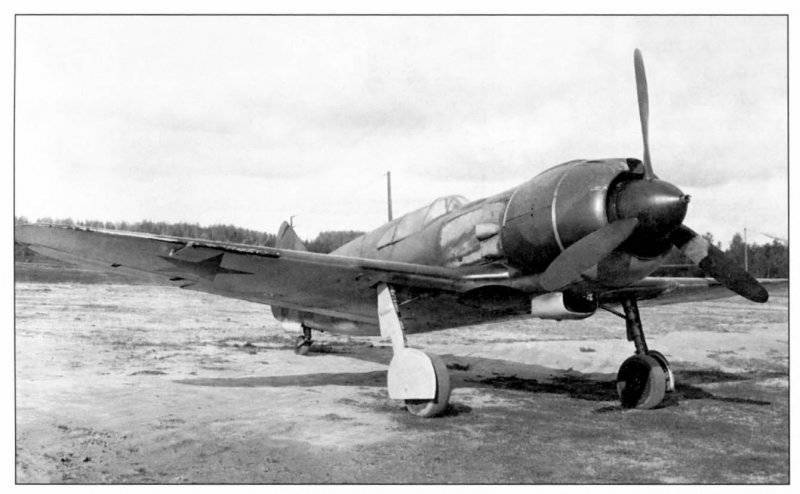
Serial La-5 No. 37210444 at the airfield of the Research Institute of the Air Force. October 1942 of the year
Taking this opportunity, I will tell you how it ended story with the Gu-82 fighter. As follows from the letter of the head of the LII A.V. Chesalov, directed by Shahurin 22 on July 1943,
The successful and original form of the hood is good, but from myself I will add that Gu-82 appeared six months earlier and in more difficult conditions on the fronts of the Great Patriotic War. Moreover, even during the La 5 test, a serious defect of the machine was revealed - a high temperature in the pilot’s cabin. More on this later. And the Gu-82, judging by the reviews of the Su-2 pilots with a similar power plant, was not.
His creative biography in the field of aircraft M.I. Gudkov graduated in 1943 year after the death of the pilot Nikashin 12 June on his plane Gu-1 "Air Cobra". The order of the NCAA from July 3 on this issue stated, in particular:
Considering that m. Gudkov M.I. this work has revealed its inconsistency as a designer, I ORDER:
1. Deprive Gudkov M.I. Gnavnogo constructor 2 degree and forbid him to engage in independent design work.
2. The personnel of the Design Bureau t. Gudkov M.I. translate into the Design Bureau Lavochkin. (It was the second wave of specialists, the first three designers from Gudkov - his design bureau was located at the plant number 156 - transferred to Gorky in September, 1942 g. - Note. Ed.).
3. Assign t. Gudkov M.I. Deputy Head of the Quality Department of Plant No. 84. ”
Looking ahead, I will say that soon after the war, Gorbunov died, drowned in the Moscow Sea, and Gudkov returned to design activity.
But back in the 1942 year. In preparation for serial production, the planes with a star engine were first designated as LaGG-3 M-82, and then LaG-5. This is evidenced by the "blue" technical descriptions of the fighter of the plant number 21. The latter, signed in print in the autumn of 1942, was apparently related to the possible duet Lavochkin - Gorbunov. But events developed in a different scenario. In accordance with the annual program, Plant No. 31 was supposed to discontinue LaGG-1942 production in the second quarter of 3 and switch completely to LAG-5. But in August, the NKAP decided to stop the production of an aircraft with an M-82A engine and resume production of LaGG-3. Moreover, two months later, in accordance with the decree of the State Defense Committee, the plant was offered to switch to the release of light LaGG-3, the first such car was laid only on November 13.
In early June, the plant held a meeting on the deployment of LaGG-3 serial production with the M-82 engine, where it was noted that the installation of the air cooling motor led to the replacement of new gun carriages, fuel and oil systems, exhaust manifolds, aircraft control systems and instrumentation pilot boards. The design of the fuselage and center section has changed. The share of aluminum alloy parts has increased. This required a revision of the technological process of production machines and the manufacture of new stocks and tooling.
In the documents, the aircraft is sometimes designated as L-82. Taking this opportunity, I must say that even earlier (in the NKAP order from 25 on April 1941 of the year), LaGG-5 with two Treskine superchargers appeared under the designation L-3. Later in the report of the plant number 21 for 1942, the year met L-7 (without decryption), issued in duplicate. Apparently, the “L” index is nothing more than the factory designation of the planes created in Gorky under the direction of Lavochkin.
The first nine LaGG-5 (LAG-5), flown around the factory pilot A.V. Bolshakov, the customer received in September, and the entire plant built an 21 fighter under this designation. Only at the end of the summer finally switched to a new car. The first serial LaGG-5 became heavier compared to experienced up to 3376 kg. But by the end of the year, as follows from the report of the plant number 21 for 1942 a year, the weight of the La-5 was reduced to 3200 kg. This was achieved, in particular, by switching to a three-tank fuel system, replacing one ShVAK cannon with a BS machine gun and abandoning the protected fuel tanks. Protecting the latter with the help of a rubber tread proved, as the experience of the war showed, ineffective against aircraft cannon shells.
The speed of the serial LaGG-5 compared with the first model of the machine increased from 515 km / h (without taking into account the installation of the radio station antenna, slats and bomb hooks) to 520 km / h (at what height, not indicated, and, apparently, near the ground on nominal mode of operation of the engine).
Since August 1942, all new cars began to be equipped with radio receivers, and every third - with radio stations RSI-4. The first vehicles appeared with the RPK-10 radio half-compasses, which significantly improved the orientation of the pilots, especially in bad weather conditions, but they were not enough for all the vehicles.
Having an advantage in speed over LaGG-3, LaGG-5 had its drawbacks. The pilots noted that when exiting the dive it was necessary to apply too much effort to the control stick, at speeds above 350 km / h (apparently, on the instrument) the cockpit lamp did not open, which had to be kept open in combat, which is a loss of speed , on the ventilation of the cabin and can not speak.
Speaking about the creators of the aircraft, it is impossible to pass over silence and those who worked on mass production. “Every day in the life of the collective,” said S. Zaichik, the former head of the assembly shop of the plant No. XXUMX, “were rich in examples of patriotism and selfless labor. On the initiative of the party organization at the plant they applied a flow system with a conveyor of a general assembly. This made it possible to produce on the existing equipment more aircraft with fewer workers. In the workshops, the results of socialist competition were summed up daily, and every day the red stars of the shift task were lit up. ”
The schedule has become an uncompromising law for the plant team. Innovators have proposed an improved fire wall with connectors for oil, gas and air wiring. Technologists have found a way to improve quality and reduce labor costs for gluing and drying wooden fuselage. Instead of a nail gluing method, they suggested using presses, and they accelerated drying using electric heating. As a result, the productivity of a number of workshops increased 2 — 5 times. ”
I must say that the M-82 engines, a huge number of which were available at the engine plant, allowed not only to dramatically improve the performance of the combat vehicle, but also contributed to a more rhythmic release of the La-5. While the supply of M-105 engines used on Yak fighters, Pe-2 and Ep-2 bomber aircraft were constantly interrupted.
A month later, by order of the National Communist Party for September 8, the fighter was given the designation La 5.
Despite the fact that in the autumn of 1942, the La-5 in increasing quantities went to the front, their flight characteristics left much to be desired. Designers and technologists are constantly looking for ways to improve the quality of their products and tried to achieve its compliance with the GKO regulations. The State Defense Committee 16 in November 1942 ordered Factory No. 21 to present La 5 with a flight weight 3100 kg for tests, and later 23 of the day demanded to install the M-82F engine on the fighter. At the same time, measures were taken to facilitate the control of the aircraft.
In December, test pilots V. Rastorguev and A.G. Kubyshkin flew around in Gorky three cars with a modified control. As a result, it was found that the handling of the La-1942 was noticeably better than that of the first series cars. Shifting from left to right and vice versa happened quickly and easily. The elevator control has become noticeably easier when performing a loop and turn-turn.
When the government ordered the plant number 99 to master the serial production of La-5, then 50 specialists were sent from Gorky to provide technical assistance in Ulan-Ude. In addition, in the Moscow plant number 381 and in Ulan-Ude, Gorky aircraft manufacturers in 1942 put 40 kits La-5 in bulk.
In 1943, at the plant in Gorky, they organized in-line production of the La-5 and rolled out of the assembly shop to 16 machines per day. The production line allowed to increase not only labor productivity, but also the quality of control of the assembly of machines. Now the controller did not run after the plane, and the workers began to take a more responsible approach to the assembly of machines.
La-5 was certainly a significant achievement of the domestic aviation industry, but it appeared late. By that time, the enemy had a Bf 109G-2, first a “five-point”, and then a lightweight “three-point” - with a cannon and two machine guns. The increased power of the Messersch-Mitt engine has done its job: not only the horizontal, but also the vertical speed has improved significantly.
The tests of Bf 109G-2 at the Air Force Research Institute and the subsequent battles near Stalingrad showed an almost complete superiority of the “German”, with the exception of the horizontal maneuver, over the La-5, especially at altitudes up to 3000 m. How not to recall the broken “triumvirate” here. If Gudkov had not been obstructed by Gu-82 in that last prewar year, then the LaGG-3 with the M-82 engine, hundreds of copies of which were unclaimed in the warehouses of the aircraft engine plant, could have said a noticeable word on the Great Fronts already World War II.
Despite the high flight characteristics, the La-5 had a lot of unresolved defects, and among them, according to the figurative expression of a military pilot, and later the famous writer Anatoly Markush, “the pilots were tormented by the African heat in the cockpit, and the soles of the sergeants kirzachs were disheveled and cracked ten flights.
There were no less defects on the La-5 than its predecessor, and many have already been mentioned. Nevertheless, it is worth giving some statistical information. For example, from July to October of the year 1942, when the first La-5 came to the front, it turned out that only one disaster had occurred. 14 chassis crashes, mostly tail support, and 203 idle machines were noted. The latter were mainly related to cracks in the engine annular bonnet, burnout of exhaust pipes, benzo and oil tank leaks, and elevator backlash.
For comparison, I note that during the same period four disasters of the Yak-7, 38 of its breakdowns and 185 downtime of combat vehicles occurred. About how much La-5 and Yak-7 in that period was at the front, I do not know. At the same time, I note that before the end of 1942, 2431 Yak-7 was released, and La 5 - 1131.
On May 31, 1943, on the 32 Guards Iap, crashed to La 5, which entered a flat inverted spin. Immediately after this incident, La-5 with M-82 was tested on a corkscrew at LII. As it turned out, with gross errors in piloting, the fighter fell into an inverted corkscrew. However, at altitudes above 1500, both the inverted and the normal corkscrew were safe, and according to the results of the research, the pilots made instructions on piloting the La-5 in an inverted corkscrew.
During the military tests of La-5, it turned out that the pilots had exploited the engine in full, as they say, to the fullest. During the battle, they had no time to adjust the temperature of the engine and oil, switch the speeds of the supercharger, and the engine sometimes worked over the allowable time at maximum speed. Apparently, this circumstance was the reason for the rather rapid appearance of the forced motor M-82F. In accordance with the October order of the NKAP, it was prescribed to build two vehicles with a flight weight of 3000 kg and armament from a single ShVAK cannon and an aircraft machine gun. The first fighter was required to transfer to the state tests by November 1, and the second - after 19 days, which was done, but with some delay.
The take-off power of the M-82F did not change as compared with its predecessor, but the short-term maximum regime that existed became virtually nominal. This seemingly minor refinement not only improved the flight performance of the vehicle, but also facilitated the conduct of combat in enhanced engine operation mode, saving the pilot from the need to be distracted by monitoring the operation of the power plant.
To achieve a given speed on one of the La-5, the sealing of the bonnet and the fire partition was further improved, the backlashes and gaps in the ailerons and rudders were eliminated, the exterior trim and a number of other improvements were improved. As a result, the plane showed the ground speed of 565 km / h, and at an altitude of 590 km / h.
The plant and the design bureau constantly fought to reduce the weight of the aircraft, but it was not possible to stabilize it. They only lightened the glider almost on the 140 kg, including by switching to the metal wing spars, as they had to return to the wooden ones due to the lack of metal.
A specific designation appeared on the hoods of airplanes with new engines - the letter “F” in a light circle, while in mass production it remained the “37” type. Differences La-5F steel three-tank fuel system and a thinner armor support (8,5 mm). This, together with incomplete refueling, has made it possible to reduce the fighter’s flight weight and improve its maneuverability, especially on verticals.
La-xnumx enters battle
In August, the 1942 of the year in the sky near Stalingrad, German pilots first met with an unfamiliar Soviet fighter. The shortness of the air battle did not allow them to carefully consider the car, from afar resembling ever less common in the sky, and X-NUMX. It was this similarity with one of the best Soviet fighters of the pre-war years, which was nicknamed “The Rat” among German pilots back in Spain, which led to the assumption that they were faced with its new modification, called the “New Rat”.
In fact, these were the first Soviet La-5, which passed military tests in the 49-th Red Banner Iap 234-th Iad 1-th Air Army. From 14 to 24 in August, 19 La-5 made 180 combat missions with an attack of 130 hours. In 27 air battles, the pilots of the regiment shot down 16 enemy planes, while their losses amounted to ten cars and five pilots. To be precise, the regiment lost five fighters downed, two did not return from a combat mission, four crashed after being shot down in air battles, one crashed due to the destruction of the main engine connecting rod bush and one of the 22 pilots of August 1942 of the year rammed German Ju 88, but it also crashed its aircraft.
According to the reviews of the 49 th pilots of the Red Banner IAP, LaGG-5 under combat conditions showed good results, and high losses are associated with insufficient material development and incomplete use of the combat qualities of the machine. For example, the second speed of the drive centrifugal supercharger of the motor was switched on at an altitude of 3800 m, and it was necessary to fight mainly at altitudes 2000 — 3000 meters. The bomber and ground attack aircraft, as well as ground troops, were covered by one group and, in the words of the regiment command, were illiterate.
In air battles, when climbing at high speeds, the BF 109F did not break away from the LaGG-5, but at low speeds, due to the greater weight of the LaGG-5, it lagged behind at the first moment, and then compared to it in climb rate. On the bends, our fighter went to the tail of the Bf 109F, since the bend radius of the latter was greater. The horizontal speed of our and German aircraft was the same, but on a dive LaGG-5 flew faster. Armament, as it turned out, was quite comfortable with the air fighters.
In addition to the fighter’s sophisticated piloting technique, due to its heavy weight (3300 kg) and insufficient rudder compensators compared to the LaGG-3 and Yak-1, there were also design flaws. For example, two cases of disruption of engine and side hoods were noted, the crutch wheel was not fully produced, there were leaks of gasoline and oil tanks along the welds, after 20 hours of operation burned exhaust manifolds. A significant advantage of the LaGG-5 over the LaGG-3 and the Yak-1 was the protection of the front hemisphere with a star-shaped air-cooled motor. Aircraft survivability increased.
There were three cases in which the enemy’s cannon fire pierced the suction and exhaust manifolds of one cylinder and the valve box lids, the propeller and the fins of the cylinders in air combat. The aircraft in this form safely landed at its airport, and the engine was soon restored.
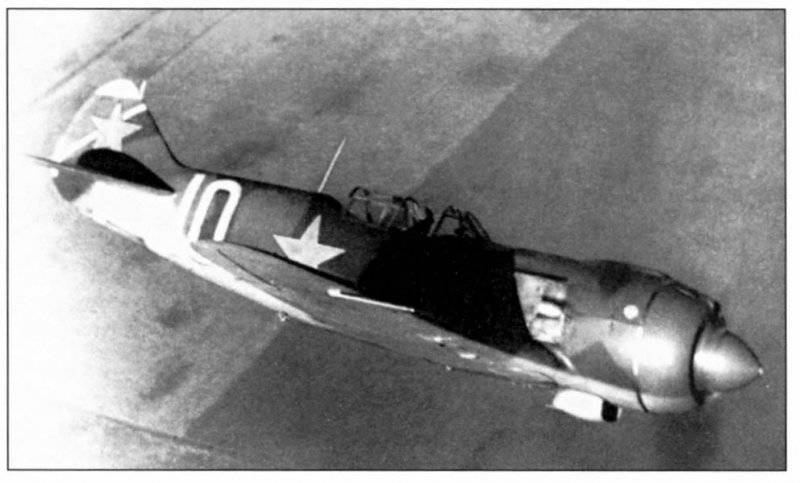
La 5F. This aircraft is attributed to the pilot of the Hero of the Soviet Union A. Pavlov from the 41 Guards Ip
When performing combat missions, the motors mainly operated in nominal and accelerated mode, and at the last, sometimes, up to 10 — 13 minutes, while the instruction allowed no more than 5 minutes. But almost all the engines worked fine. In the conclusions of the report of the leadership of the Air Force Research Institute to the Chief Air Force engineer A.K. Repin noted:
After the debut of La-5 in the fall of 1942, the pilots of the 5-th Guards Iap in a letter to the aircraft builders of the plant No. 21 reported:
A vivid example of the use of the La-5 fighter can be the combat experience of the 13 and 437 th fighter regiments of the 201 13th hell, operating near Stalingrad. This experience was compiled by P.M. Boykov in the book "On the main directions".
Already in November, 1942, the German aircraft sharply intensified combat work. In this regard, the commander of the 8-th VA brought into battle 2-th mixed air corps, which included the 201-I hell. Once, covering the crossing over the Volga, two pairs of La-5, led by captain I.I. Ten-nikov, met 12 bombers Ju 88, covered six Bf 109. Having broken up into pairs, the Soviet pilots upset the battle order of the Germans, knocking down three and damaging two cars. It seemed the battle was over, but at that time another nine twin-engine Bf 110 and four Bf 109 arrived in time for the crossing. In these battles, the enemy failed to count six aircraft, and three of them fell on Tennikov, one Bf 110 brave pilot destroyed a ram attack, while he remained alive.
On November 24, the eight La 5 13-iap headed by Lyshkov, covering the Il-2 attack aircraft, fought first with the four, and then with 12 Bf 109. They destroyed five enemy aircraft without losing a single one of them. Two days later, the four La-5, performing a similar task, destroyed three Bf 109, losing only one of its fighters who made a forced landing.
The pilots of the 437 iap were equally efficient. On December 1, the eight La 5, headed by captain V.N. Orlov, in aerial combat with 12, enemy fighters over Gumrak airfield shot down five cars. On the same day, the foursome La 5 under the command of Senior Lieutenant I.V. Novozhilova cleared the area of their forthcoming actions for attack aircraft and in five minutes she shot down five enemy aircraft. On the plane La-5 in 1943, I opened the combat account of I.N. Kozhedub, and in the car presented to him by the collective farmer Konev, brought the number of victories to 45. Is this not evidence of high proficiency of pilots and high performance of the La-5!
The “air battles” at the Air Force Research Institute between La-5F and Bf 109G-2 and G-4 showed that the former had an advantage in the climb and radius of turn to the height of 6000 m, going into the tail to the Germans after three or four turns. La-5F was not inferior to "mes-smitmittas" in battles on verticals, but here the advantage to the height of 3000 m was on the side of a more experienced and enterprising pilot. The situation was no worse in the battle with FW 190А-4 and А-5. La 5F and here could stand up for himself.
In 1942, Plant No. 21 produced the La-5 with the LaGG-3-type emergency dumping devices, and since February of the same year, the La-5F with the fuselage cut-off gargrotta (this provided the necessary rear hemisphere view), as well as with the front and rear bulletproof glass. Front pilots liked the latest innovation, but the plant management planned for June to fully switch to such a flashlight. The Air Force did not like this, and the head of the Air Force Orders Department, General Alekseev, asked the NKAP to speed up the resolution of this issue and begin to hand over the modified La-5F in mass quantities in April.
In the fall of the year 1942 from the assembly shop of the Gorky Aviation Plant rolled out and 21 November presented on state tests La-5 with the motor M-82F. Noteworthy is its designation of the type "39"; all the previous machines X-LUMN and L-5F left the factory as the “5” type. The new aircraft was a lightweight three-pack fighter with a low gargrot. In his arsenal were a gun ShVAK and a machine gun of the Armed Forces.
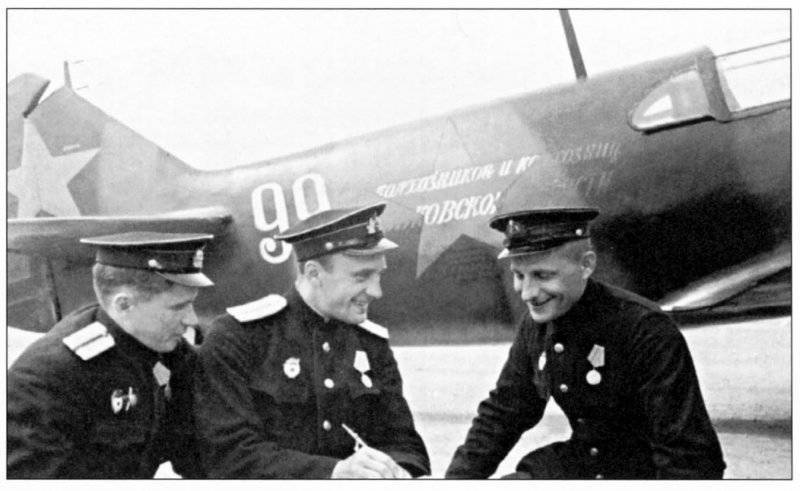
La-5, purchased with D.I. Moskalev from the collective farm "New Way", 4-th Guards Iap, Baltic Fleet, 1943 year
During state tests on the improved La-5, which ended in January 1943, the maximum speed of 600 km / h was obtained at 6300 m and 582 km / h on 3600 m. This was the highest result for La-5 with M-82F motor, at the same time, the plane became transitional from La 5F to La 5FN.
On the eleventh of December, 1942, in the Gorky press, there was a call-appeal from the collective farmers of the Chkalovsky district to the working people of the Gorky region to build a squadron of Valery Chkalov airplanes. This action received a strong response, and the plant number 21 began to receive funds for which they built over 60 fighters. As a result, the conceived squadron turned into a full-blooded division.
The combat work of fighters with the name of the legendary pilot is described in detail in the book by V.A. Persian "Squadron" Valery Chkalov "(Nizhny Novgorod, 1999 g.). I will give only information about the shelves flying on these machines.
The first 17 La-5s, apparently with M-82F engines, with the words "Valery Chkalov" entered the 4th Guards Iap of the Red Banner Baltic fleetbased at the Bull Field airdrome. Then 14 of the same aircraft (and from the middle of 1943 and La-5FN) arrived in the 193rd IAP, 15 and 10 aircraft each in the 88th Guards IAP and 254th IAP, respectively. One fighter was listed in the 137th and 21st fighter regiments. There were aircraft with the words "Valery Chkalov" in the 240th, 13th and 111th Guards regiments, but their exact number is unknown to the author.
La 5FN
A lot of the industry and the Air Force delivered an undetermined carburetor AK-82VP, which allowed for increased fuel consumption and, as a result, a decrease in the range of La-5 and La-5F. So, tests of La-5 No. 37210404 b of the Air Force Scientific Research Institute in October 1942 showed that in flight at the most favorable speed and altitude up to 2000 m, the range did not exceed 960 — 970 km. In the summer of next year, the 5 No. 37212124 range dropped to 820 km, and the 5F No. 37212501 dropped to 580 km. In both cases, the fuel supply was the same - 340 kg, but in the second an additional reason for the decrease in range was the deteriorating aerodynamics.
In February 1943 of the TsAGI on the scales of the full-size wind tunnel T-101 TsAGI installed a serial copy of the La-5 No. 37210514. The power of the electric motors, which caused a pair of pipe fans to rotate, was such that the tests were carried out exclusively at night — otherwise the whole city would have to be disconnected from the power grid.
Studies have shown that if the aircraft is sealed outside and inside the cockpit from all sorts of overflows of air and closed with flaps of the dome wheels of the chassis, then you can reduce the aerodynamic resistance and increase the speed by approximately 35 km / h. Moreover, the greatest increase in speed (24 km / h) gave the first path associated with the sealing of the fighter.
In addition, in some cases, the wing of the La-5 had the lowest value of the coefficient of lift from the domestic fighters. When we figured out, it turned out that the opening of the cowl flaps, which regulated the engine temperature, led to a disruption of the flow on the center section and, as a result, to a violation of the linear dependence of the lift coefficient on the angle of attack. The diagnosis of the "disease" La 5 was made exactly, it remains to develop a method for its "treatment."
In March-April, the La-5 with a sealed engine hood and an oil radiator tunnel, with an air intake transferred under the fuselage (for the fifth frame), was investigated in a natural wind tunnel TsAGI T-104. The results were encouraging, only this event gave 25 — 30 km / h, and a number of smaller improvements added 10 — 15 km / h. In addition, the temperature of the motor has improved, since the air flow through the masloradi ator has increased by almost a quarter.
So the next step was made to one of the best fighters of the Second World War - the future of La-7.
While in the Design Bureau in accordance with the recommendations of TsAGI, the La-5 was being finalized, in the same 1943 year, the production machine No. 37212282 with a retractable tail wheel was presented for control tests. Eight flights were enough to make a conclusion about the full compliance of the flight data of the machine with the decree of GKO from 9 December 1942, although the dome of the radio station antenna was still uncovered on the dome (notched in the wing under the wheels) of the chassis.
At the beginning of the 1943, the M-82 engine was replaced with gasoline direct injection equipment instead of a carburetor. The take-off power of the engine, designated M-82FN, increased by 150 hp, and the nominal at 1650 meters altitude - by 90 hp At the same time he was heavy on 30 kg. Soon, the motor was launched into mass production and installed on the 5 La.
In April, the 1943 of the Air Force Research Institute received the “Doubler” of the La-5FN fighter (type “39” with the emblem on the hood, first in a circle with the inscription “FN” and then in the form of a rhombus, inside which was also “FN”) with metal wing spars. However, in the series, he first went with the old delta-wood spars, later replaced with metal ones. A month later, a state-of-the-art, still smelling of paint serial La-5FN (No. 39210104) entered the state tests. Plant No. 21 was not yet ready to introduce all the innovations, and on the combat vehicles destined for the front, continued to use wooden spars and non-retractable crutch wheels. But there was some progress. Thus, the elevator area has increased and the total sector of its deflection has decreased from 55 to 40 degrees. If earlier the ailerons deviated symmetrically up and down (the total angle of 35 degrees), now they have increased the angle of upward deviation and reduced it downward, which positively affected their efficiency. The pneumatic control of the fire from the guns was replaced by pneumoelectric, the front louvers were removed from the motor, and a number of other smaller, but equally important changes were made.
Leading on testing "Dubler" were engineer AS Rozanov and pilot A.G. Kubyshkin. And although it is heavier, its flight characteristics improved due to a more powerful engine compared to the La-5F. The maximum speed at the second height limit (5800 m) reached 610 km / h, and the climb time of 5000 m was reduced by almost a minute. According to the pilots A.G. Kubyshkina and V.E. Golofastov, the technique of piloting the fighter did not differ from piloting the serial La-5. The elevator was easy to handle, and aileron loads were normal. Despite the fact that the cabin was still hot, the Air Force Research Institute gave the car a positive assessment.
Air battles, still in the test area near Moscow, between La-5FN and one of the best German fighters Bf 109G-2 with three points of small arms, conducted by test pilots of the Air Force Research Institute in 1943, showed that the Lavochkin machine to the height of 5000 meters had before the "Messerschmitt" advantages in vertical maneuver. In the battles on the horizons of La-5FN, after four or five turns, he entered the enemy's tail.
Despite the improvement in flight data, excessive flight weight was considered one of the main drawbacks of the vehicle. On this occasion, the director of the plant number 21 SI. Agadzhanov reported to the Deputy Commissar of the Aviation Industry P.V. Dementiev:
This is complicated by the fact that plant number 19 supplies motors weighing 929 kg instead of 900 kg.
I ask you to put the issue of the weight of the La-5 M-82FN with wooden side members of the wing and center section in 3295 kg to the decision of the state short-term company ... "
In May, the 1943 of the year the assembly shop of the plant No. 21 began to leave the first serial La-5FN. The scatter of the take-off weights of the fighters and their flight data remained high. Apparently, the lightest was La-5FN No. 3811022 with metal spars, released by Plant No. 381 in February 1944, with a weight of 3145 kg it developed the speed 595 km / h at an altitude of 5950 m, and the heaviest was Gorky's La 5FN No. 39210206 - 3445 kg.
La-5FN is constantly improved from series to series. If earlier this was associated with small changes, which reduced mainly the labor intensity of the machine, then at the beginning of 1943, the OKB made another attempt to improve all the characteristics of the aircraft. In August, the 1943 fighter rolled out of the assembly shop of the 39210109, and the experienced aviators' eye immediately noted the innovations. First of all, the intake pipe was transferred from the top of the engine under the hood, and the protruding “beard” of the oil diator was placed between the third and fifth frames. The flashlight instead of the sliding part became open to the side as Bf 109, and the additional shields completely covered the retracted wheels of the main supports.
In addition, the wing fuses with the fuselage were improved, the exhaust manifolds were replaced with individual tailpipes, the hood was refined and the aircraft was sealed. The axle elevator compensation, which reduced the load on the aircraft control stick, increased to 20% and the PBP-1 sight was replaced with the BB-1. The armament remains the same - two synchronous guns SP-20, the cabin equipment has not changed either.
In this form, the aircraft entered the state tests, which took place from September 30 to October 18 1943. Leading engineer for the car was N.N. Borisov. According to test pilots AG Kubyshkina and I.M. Dzuby, P.M. Stefanovsky and A.G. Proshakov, the aircraft on piloting technique was no different from the serial machines, but the view from the cockpit to the sides deteriorated due to the rubbing of the Plexiglas of the side moving doors, which complicated the landing and take-off from limited sites. Moreover, the lantern that opened to the side made it difficult for the pilot to land in the cockpit, and his emergency dumping with both hands turned out to be inconvenient. But the review ahead thanks to the air intake under the hood improved, making it easier for the pilot to aim.
The speed increased to 630 km / h speed, the single turn time was reduced by 1 — 2 seconds, and the climb for the combat turn increased to 120 m. Better cab sealing and ventilation allowed to reduce the temperature to almost 30 degrees. Although the fighter did not go to the series, many technical solutions embedded in it, migrated to the future La-7.
In the spring of the same year, a new star-based engine M-5F was installed on the La-39210204 No. 71. The use of this engine on various types of aircraft, both on fighters and on bombers, was all the time accompanied by failures. Although the motor passed the 50-hour bench tests, something was constantly breaking during the flight of both the M-71 and its forced modification. Did not become an exception and La 5. Although the M-71 F engine not only climbed over the contours of the hoods of the previous powerplant, but also weighed down the fighter, its great power (on take-off, it developed to 2200 hp) did its job. Flight tests conducted at LII from April 28 to 4 on June 1943 of the year showed that the maximum speed of the fighter increased to 685 km / h at 5500 m. At the same time, the car’s climb rate did not change much.
To find out ways to improve the performance of the machine, it was investigated in the natural wind tunnel TsAGI T-101. The conclusion of the specialists of the Aerohydrodynamic Institute was optimistic - the improvement of the aerodynamics of the aircraft, especially the engine nosing, will bring the maximum speed to 720 km / h. But fine-tuning La-5-71 dragged on. It was designed, but the fighter with the star-shaped M-90 engine with the take-off power of the 1750 hp was never completed.
As it is known, the production of La-5 was also established by the Moscow plant No. 381 in accordance with the order of the NCAP from October 10 1942, and the first cars were assembled from the plant units 21. In 1944, a small team of serial plant design bureau No. 381 proposed to install a power unit with a motor mount from La-5 on the serial La-7F. In April, on the car number 3811507 the carburetor engine ASH-82F was replaced with ASH-82FN with direct fuel injection. At the same time, they preserved the exhaust manifolds from the predecessor and modified the side flaps. The aircraft, which received the official name "Hybrid", was tested at the Air Force Institute in May 1944. Engineer V.I. Alekseenko and pilot A.G. Kubyshkin. Compared with the “Understudy” of the La-5FN Plant No. 21, it had significantly worse flight data. For example, its maximum speed was lower on 68 km / h, which, apparently, is connected with the weighting of the car and the worst finish of its external surface.
The plane did not stand the test. The Air Force Institute recommended that the installation of ASH-82FN engines be used in the repair of La 5F in field conditions only as a last resort.
From 30 January to 11 February 1944, the flight test base of the plant number 21 conducted control tests of the serial La-5FN with three guns UB-20. The maximum horizontal speed at the ground at the rated engine operating mode did not exceed 596 km / h. Based on the experience of operating a number of airplanes, it was assumed that when the motor is forced, the maximum speed at the ground will increase by 30 — 35 km / h and reach 630 km / h. Since 1944, all La-5FN (type "41") of plant No. 21 were produced with metal spars.
At the end of 1943, in parallel with the three-gun variant, a car was developed with a pair of WV guns and a VS machine gun.
Beginning in the summer of 1943, the La 5 No. 2124 began to explore the joint pitch control and engine gas control. The results were considered satisfactory, but the automation required improvements. In November, these studies were continued on the La-5F aircraft No. 39213956, and in the spring of 1944, on the La-5FN. But this innovation did not reach the serial La-5, it was requested only on the La-7.
And another curious stroke from the biography of La-5. At the beginning of 1945, the year M.L. Miles, later a famous helicopter designer, suggested using landing plates to improve the fighter’s maneuverability. In March of the same year, the vehicle underwent research at LII, which showed that the turn time at the height of 10OO m was reduced by 1,5 — 2,5 seconds, and at the height of 4000 m — by 2,5 — 3,5 seconds. At the same time, the turn radius decreased by 15 — 20 and 50 — 60, m, respectively. It was proposed to use this idea on the aircraft La-7, manufactured by plant number 381. The war was already over, the proposal remained unimplemented, but it has not lost its relevance to this day.
Baptism of fire
The troop tests of La-5FN took place in July — August 1943 of the year in the 32-th Guards Iap on the Bryansk Front. Within a month, 14 Soviet pilots in 25 air battles shot down 21 FW190, three Bf 109G-2 and Not 111, five Ju 88 and one Ju 87. In this case, their losses amounted to four cars.
In large quantities, the La-5FN began to be used in the battles of the Kursk Bulge. It turned out on this front and already familiar to us 201-I of Colonel V.A. Skryvkina, who opened the battle account on La-5FN 21 July 1943 of the year. On that day, the six La-5FN captain V.F. Mistyuka, accompanying the Il-2 attack aircraft, shot down three Bf 109 and one Ju 88.
On August 3, the top ten La-5FN, led by Senior Lieutenant S.D. Gorelovsky and the accompanying stormtroopers attacked the enemy's 35 fighters. In the ensuing battle, the enemy was short of eight "Messerschmitts", of which the squadron commander SD was shot down in pairs. Gorelov and flight commander B.P. Horn.
On August 12, the squadron of Senior Lieutenant P.A. Gnido met in the area of Maksimovka - Olshany 30 bombers and enemy fighters. In this battle, the Soviet pilots destroyed ten aircraft, and among them four fell to the squadron commander. But on the way home the plane was on fire. It was the only loss of the group, but the commander escaped by parachute.
Speaking of La-5FN, it is impossible to ignore the feat of Lieutenant, deputy commander of the squadron of the 88 Guards, iap AK Horowitz, awarded the title Hero of the Soviet Union 28 September 1943. In one of the July battles at Kursk, Gorovets shot down nine Ju 87 dive bombers. Such a case was the only one in the history of the Great Patriotic War. But on the same day, returning to his airfield, Horovets died in an unequal battle with four enemy fighters.
Everyone knows about the feat of the military pilot Alexei Maresyev. But few people know that, having lost his legs, after the 15 months spent in hospitals, he entered the post of deputy squadron commander of the 63 Guards Infantry (3-I Guard iad, 15-I BA). On July 6, 1943, on the second day of the Battle of Kursk, A. Maresyev, consisting of the six La-5 (apparently, La-5FN), led by captain A. Chislov, made the first sortie on prostheses. And this is on a plane that was distinguished by heavy steering. On that day, a group of fighters fought twice, and in the second of them Maresyev shot down one Ju 87. In the battles of the Kursk Bulge and in the Baltics, Maresyev shot down seven enemy aircraft before moving to the Office of Military Schools in 1944 in the year. For participation in the battles on the Kursk arc 24 of August 1943, Maresyev was awarded the title Hero of the Soviet Union. A little later, you will learn that it was in this regiment that troop tests of the La-7 passed.
It was possible for La-5 fighters to deliver bombs and assault strikes. So, 2 May 1944, 24 La-5FN 113-th Guards Iap under the command of Lieutenant Colonel SI. Chertkov rose from the airport Chernivtsi and headed for Stanislav. Shock group of 12 La-5, led by assistant regiment commander captain A.N. Grigorenko, stormed the enemy's airfield and climbed 2000 m, waiting for the IL-2 approach under the cover of another 12 fighter. At this time, eight Bf 109 appeared in the air, and after a while - 16.
Lieutenant Colonel SI. Chertkov, having sent his group to the attack, upset the battle order of the enemy, who had missed six cars. Two of them were destroyed by the commander.
On July 21, 1944, a group of 28 La-5FN, led by Lieutenant Colonel SI. Bloody, she stormed the enemy's airfield in the Lviv region, destroying and damaging 15 FW190. Cover fighters shot down four Bf 109 in the air battle that had arrived to unlock the airfield. And there were many such examples during the war years.
1943 year was the most productive for 5-th Guards Iap, who fought on La-5. Of the 739 enemy planes shot down by regimental pilots for the entire war, more than half fell on that year. In the first days of October, the 5-th Guards Infantry, on new La-5FN aircraft that had just been received from the factory, redeployed to the airfield Korovets, which is located in 30 km east of Dnepropetrovsk, where fierce battles were fought over the bridgehead on the right bank of the Dnieper.
We understood that heavy fights were coming, and we thoroughly prepared for them. What came out of it, let me show you by example. The patrol time over the covered troops, as a rule, ranged from fifty minutes to an hour. In order to have the opportunity to fight during such a flight duration, it was necessary to patrol at low economic speeds, which obviously put us at a disadvantage in the sudden attacks of the enemy. It was possible to correct the situation only by increasing the patrol speed, which means fuel consumption. At the same time it was necessary to reduce the time of patrols. The regiment commander set out these considerations to the commander of the 17 VA, and he allowed it.
The experience of previous fights showed what our La-5 lacked and what are the ways to improve tactics, taking into account the capabilities of the La-5FN with a more powerful forced engine and improved visibility in flight with a closed lantern. Keeping up with a dive, La-5FN surpassed the latest Me-109 modifications on the vertical line at that time. The technical structure of the regiment equipped all new aircraft with radio stations and comfortable oxygen masks in battle.
On October 14, a group of eight La-5FN, led by I. Laveykin, flew out to cover the troops in the area of ferries across the Dnieper. The leader led the shock group, I - holding down. We reached the front line at a height of 5000 — 6000 m with a decrease at speeds close to the maximum. Aces- "hunters" did not take long to wait. But where did the seemingly high speed of “Messerschmitts” go to? Having lost superiority in speed, the enemy lost surprise. The number of attacks by German pilots has declined markedly. If some decided to re-attack, the prospect of withdrawing from the battle with impunity was ruled out for them. Our strike team was able to more effectively attack enemy bombers - 15 U-88 and 25 U-87. In that battle, we shot down three bomber and two fighters ...
Our successful actions were unexpected for the enemy. This was confirmed by the downed fascist fighter pilot. Somewhere in the middle of October, he was brought to our regiment, and I happened to be a translator when he answered questions from our pilots. The German did not boast of his past successes, but at the end of the conversation asked to show him the plane on which he was shot down. The regiment commander allowed. When the pilot was brought to the plane, he was genuinely surprised: “It cannot be, this is“ la-funf ”, he could not catch up with me!” Yes, it was La-5, but “FN”, whose pilot skillfully used the capabilities of the new aviation technology ...
The battles for the Dnieper were an important stage in the formation of our regiment, equipped with la-5FN aircraft. Skill pilots will not comment. I can only say that many of my fellow soldiers, I. Laveikin, V. Popkov, P. Kalsin, S. Gpinkin, I. Shardakov, E. Yaremenko and others, significantly increased their “revenge score” - the number of enemy aircraft shot down. But not everyone returned from battlefield - such is the merciless logic of war. The hero of the Soviet Union died: the squadron commander of the guard, Captain I. Sytov, the commander of the guard link, Lieutenant M. Potekhin, the pilot of the guard, Junior Lieutenant S. Efimenko ... ”
Despite the good feedback from Soviet pilots on the 5, manufacturing defects accompanied the machines during their entire life cycle. On La-5FN there were frequent fires. For example, in 159 Guards Imp in June, two such cases were noted. In one of them the plane burned down, and in the other a burnout of the exhaust pipe was found. In the same month, another La 5FN caught fire at the Air Force Research Institute in flight. 2 July in the same 159-th Guards Iap when sampling the engine ignited gasoline and oil on the right side panel of the screw-motor group. And again, the search for reserves and the elimination of defects.
Since July, 1944, on La-5FN, began its 1-th Czechoslovak iap combat path as part of the 2-VA. In September of the same year, Czechoslovak pilots relocated to the Zvolen area. There, in the enemy's rear, they stayed for more than a month, actively supporting the Slovak rebels. In these battles, the commander of the regiment F. Fight, the pilots J. Steglik, L. Sharom, F. Haber, F. Shtych-ka, P. Kotsfeld especially distinguished themselves. In order not to interrupt the narration, we note that the Czechoslovak pilots of the 1-iap subsequently moved to La-7 and managed to make war on the Soviet-German front. After the war, the remaining La-5FN, UTIL-5 and La-7, which received the designations S-95, CS-95 and S-97, respectively, were concentrated in the 4-iad deployed in Slovakia. Carefully groomed machines stored in enclosed spaces, served until the beginning of the 1950-s. In 1946, the Czechoslovakian Air Force had 55 La-7, and a year later, some S-97 had a chance to make war with the Bandera people who were hiding in the mountainous regions of the country.
Apparently, during the Battle of Kursk, La-5FN fell into the hands of German specialists, becoming a successful trophy for them. A slightly damaged car was taken to the test center in Rekhlin (an analogue of our Air Force Scientific Research Institute, which was stationed in those years at the Chkalovskaya airfield near Moscow). Launched the 5FN pilot Hans Werner Lerche. Of interest is his report, the literal translation of which was published in the Aerohobby magazine in 1993:
During flights at altitude, it is forbidden to turn on the afterburner, since the flow area of the engine throttle air channel is not enough to achieve maximum power.
The aircraft was fully serviceable. His touch is unknown, but the car has already served for some time. The finish of all surfaces, especially the wings (wood), is good. Handlebars and slats are made very carefully.
The pilot sits comfortably. An overview of the cabin ahead is sufficient, but on take-off, landing and taxiing is significantly limited by the engine. On the ground and in the air a strong plume of exhaust gases. High altitude oxygen system, apparently never used. Its design is based on the German diaphragm direct-flow economizer system. The pitch control of the propeller (on the plane was an automatic pitch propeller. - Note. Aut.) By water radiators, blinds, trimmers, and so on - manual with the help of various rods. This distracts the attention of the pilot and reduces the flight characteristics in aerial combat.
At takeoff, the engine power varies slightly, but within acceptable limits. The tail should be raised slowly and not too early. The small clearance from the screw to the ground makes piloting difficult. The acceleration on the run is good, and the take-off distance with flaps deflected by 15 — 20 degrees is relatively short. Due to the absence of a trim position indicator, special attention should be paid to the correctness of their deflection on the elevator and turn wheels.
The longitudinal stability at flight angles of attack at any position of the chassis and flaps is unexpectedly good, even during the climb of the boost. Efforts on the control stick are normal. When performing deep turns efforts increase significantly, but remain positive. To perform the steady reversal, it is necessary to work with pedals in order to keep the “nose-to-wind”. (No slip. - Note aut.)
Static travel stability and rudder efficiency are usually satisfactory, but fall sharply at low speeds. Dynamic track stability is weak, the damping of yaw oscillations is unsatisfactory. At a speed of 450 km / h and an altitude of 200 meters, the oscillation period is about three seconds, and the pilot cannot suppress them in a shorter time. Aiming is very simple ... “Dutch step” type vibrations can be easily suppressed by a slight deflection of the rudder.
The effectiveness of the ailerons is outstanding. At a speed of 450 km / h, a full rotation is performed in less than four seconds. At a speed of 600 km / h, the forces on the ailerons become excessive, but you can resort to the help of rapid effects of the rudder.
On the cruising power of the engine, with the landing gear and flaps removed, the release of the slats occurs at a speed of 200 — 210 km / h. With a further decrease in speed, the effectiveness of the ailerons decreases. When 180 km / h is reached, it becomes difficult to dampen the list, and in the case of a flight with a slip during braking, the plane falls on the wing. With gas removed and landing gear and flaps, similar reactions occur at close speeds. If the pilot continues to pull the handle towards himself, the plane goes to the maximum allowable angles of attack and falls on the wing.
When performing steep vigorous turns, the disruption of flow on the wing leads to similar results, but the lack of ailerons is felt more distinctly and at much higher speeds. This happens, for example, at 2400 m and 320 km / h speed when performing a full turn in 30 seconds (2,6 multiple overload, 67 degrees roll), as well as at lower speeds and large overloads, but with slats released. With forced sudden movements by the ailerons, there is an unpleasant tendency for the handle to move in the direction of rotation of the aircraft. However, due to the reserve angle of attack before the breakdown after the release of slats, this phenomenon is not dangerous.
At an altitude of 2400 meters and engine cruising power, the shortest time is a complete turn without loss of altitude 28 — 30 seconds. At a height of 1000 meters and the engine being forced, a complete turn is performed in 25 seconds.
A reduction at a speed of less than 200 km / h is only possible using engine power. During alignment, the wing lift significantly increases, so you should pay particular attention to balancing the aircraft. Landing on three points is not difficult. If this fails or the ground is uneven, then keeping the car on the run becomes difficult. The situation is aggravated by uneven wheel braking. The aircraft can "nod" and "goat." Due to the limited distance to the ground, a screw is subject to special danger.
Disruption of the flow on any wing console during taxiing is not dangerous due to the wide gauge of the chassis. With a strong side wind, the rudder is not enough to keep the aircraft on the lane, but in this situation you can resort to using brakes.
Due to the merits of its engine, the La-5FN is better suited for low-altitude combat. Its maximum ground speed is only marginally less than that of the FW 190-8 and Bf 109 in the afterburner. Acceleration characteristics are comparable. La-5FN is inferior to Bf 109 with MW-50 (injection system into cylinders of water-methanol mixture. - Note. Aut.) In speed and climb for all heights ...
The Russian fighter surpasses the FW 190А-8 up to the height of 3000 m in speed. Due to its large weight, the FW 190А-8 is slightly inferior in acceleration characteristics, but thanks to it it also looks better on all maneuvers with diving and during a combat turn at high speed. Therefore, avoiding the attacks of La-5FN should be performed by diving, then go into a gentle climb at high speed to take up a position to attack. "Lavochkin" has the best rate of climb at high angles of pitch, and therefore does not lag behind. In no case do not lose speed and avoid long maneuverable combat.
Remember the short duration of the flight La-5FN: 40 minutes at normal power and even less - in the afterburner. "
From myself I will add that the flight data of the trophy La-5FN, which was in the hands of German specialists, were underreported. So, for some reason, the speed decreased depending on the height by 10 — 50 km / h, and the ceiling — as much as 1500 m. However, the same thing happened with the German trophy technology in the USSR, but there is no evil intent here; to the test results.
In the summer of that year, FW190A-4 from the 54 squadron fell into the hands of Soviet specialists. During the battle, the propeller blades were shot through due to the unregulated synchronizer. The machine, devoid of traction, made a forced landing. The aircraft recovered at the Scientific Research Institute of the Air Force was thoroughly investigated both on the ground and in the air. Engineer P. Onoprienko and pilot Yu.A. Antipov.
The plane had a good overview, the pilot controlled the power plant, only by moving the engine control lever, and all its other parameters were adjusted automatically. But in terms of altitude, speed and maneuverability, it was still inferior to Soviet fighters, including the La-5FN.
It is curious that the same car experienced in England, but received higher performance. This can be explained only by the difference in methods of removing the flight characteristics and excellent operating modes of the propeller group. On the FW190A-4 there were 20-mm cannons with a huge, by our standards, ammunition - 680 ammunition, which exceeded the general ammunition La-5, and two 7,92 mm machine guns with 1800 cartridges.
On October 25, 1944, in Western Ukraine, in the area of the village of Rakitnoye near Rovno, another FW190A-4 fighter, piloted by Karl Andriasovich Peterson, made a forced landing. A survey of the car, made in September 1944, at the Air Force Institute showed that it surpasses the A-4 modification in maneuverability and range (the latter, due to the additional fuel tank of 118 liters, also provides for the 230-liter hanging tank). Judging by the weapons, variant A-8, intended to fight bomber (as our military believed), became the most massive fighter of the FW190 family used in battles from the beginning of 1944.
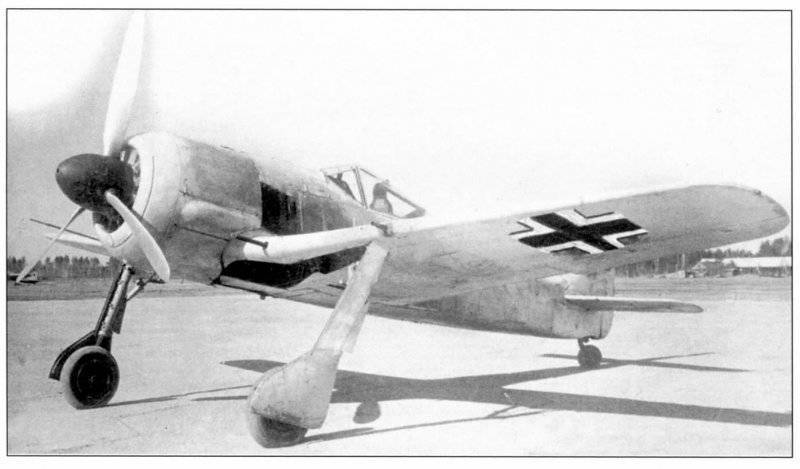
Trophy fighter FW 190А-4 at the airfield of the Scientific Research Institute of the Air Force. This photo was used in the book “German planes” (1944 year) and for completeness of impressions instead of red stars drew crosses
The plane was completed with four guns (two wing MK-108 caliber 30 mm and two synchronous caliber 20 mm) and a pair of large-caliber machine guns. On the same machine, the BMW-801 engine had an 10-minute forced mode with an increase in speed from 2450 to 2700 per minute. As shown by flight tests at the Air Force Research Institute, the A-8 variant exceeded the A-4 in maneuverability, but was inferior to the Yak-3 with the VK-105PFXNNXX and La-2 engines.
Five months later, the Air Force Research Institute tested FW 190A-8 earlier than its predecessor. To reduce the flight weight on this plane, the fuel supply was reduced to 393 kg. If the German pilot, who was testing La-5FN, meant this fighter, and not the 682011 number that came to us, then the Air Force Scientific Research Institute compared him not to La-5FN, but to La-7. According to the estimates of test pilots Yu. Antipov, I. Dziuba, A. Ku-byshkina, L. Kuvshinova, A. Proshakov and V. Khomyakov, La-7 had a full advantage in aerial combat over lightweight FW190A-8. For this reason, the German pilots tried to avoid air combat with the 7 La.
"The powerful engine" Focke-Wulf-190 ", - told the front-pilot PM. Boykov, - provided him high speed, but in flight it is heavy and inert. To compensate for this shortcoming, the fascists created mixed groups. The Fokkers, as a rule, went below and willingly imposed battle on our fighters on a collision course, and Me-109, being above, attacked from above from the rear hemisphere. Favorite tactical method of fascist pilots.
According to the commander of the 2 th Fighter Air Corps, subsequently the head of the Air Force Research Institute, General AS Blagoveshchensky, La-5 in the spring of the year 1943 was the best fighter in the Air Force. But the carelessly made cockpit canopy, when the pilot lacked the strength to move him in flight, as well as the Dzus locks on the engine hoods and other defects reduced the combat qualities of the vehicle. Yes, and the weapons turned out to be rather weak, at least three barrels were required. According to the figurative expression of the general: “Such a good plane cannot have such a small fire.”
He fought on La-5 of various modifications and already familiar to the reader 523-iap, which by the end of the war received the name Orsha Red Banner of the Order of Suvorov, Kutuzov and Alexander Nevsky. From 23 February 1943, when the regiment first began fighting on La 5, and on 9 in May 1945, the pilots of this unit made 6982 sorties, participated in 135 air battles. During this period, they shot down 68 enemy planes, losing their cars to 64. Under the fire of anti-aircraft artillery and in air battles 45 pilots were killed.
La-5 was certainly a significant achievement of the domestic aviation industry, but it appeared late. By that time, the enemy had a Bf 109G-2, first a “five-point”, and then a lightweight “three-point” - with a cannon and two machine guns. The increased power of the Messersch-Mitt engine has done its job, not only horizontal, but also vertical speed has improved significantly.
The Bf 109G-2 tests at the Air Force Research Institute and the subsequent battles near Stalingrad showed an almost complete superiority of the “German”, with the exception of the horizontal maneuver, over the La-5, especially at altitudes up to 3000 meters. How can you not recall the collapsed triumvirate "LaGG".
The “air battles” at the Air Force Research Institute between La-5F and Bf 109G-2 and G-4 showed that the former had an advantage in the climb and radius of turn to the height of 6000 m, going into the tail to the Germans after three or four turns. La-5F was not inferior to the Messerschmitts in vertical battles, but here the advantage to the height of 3000 m was on the side of a more experienced and enterprising pilot. The situation was no worse in the battle with FW 190А-4 and А-5. La 5F and here could stand up for himself.
In the summer of 1943, entire FW 190 connections were used during the battles at Kursk Bulge.
- Nikolai Yakubovich, "All aircraft Lavochkina"
- Achtung! Achtung! In the air La Xnumx
"Standard 1944 of the Year" La-7
Full Metal La-Xnumx
The last piston la fighter
Semi-reactive la
Reactive firstborn Lavochkina
Unmanned aerial vehicles Lavochkin
Rocket "Umbrella" Lavochkin
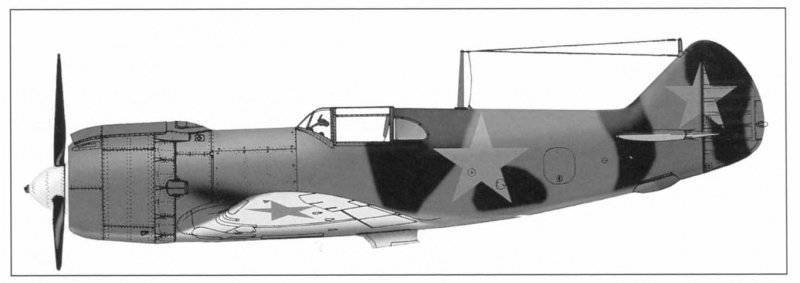
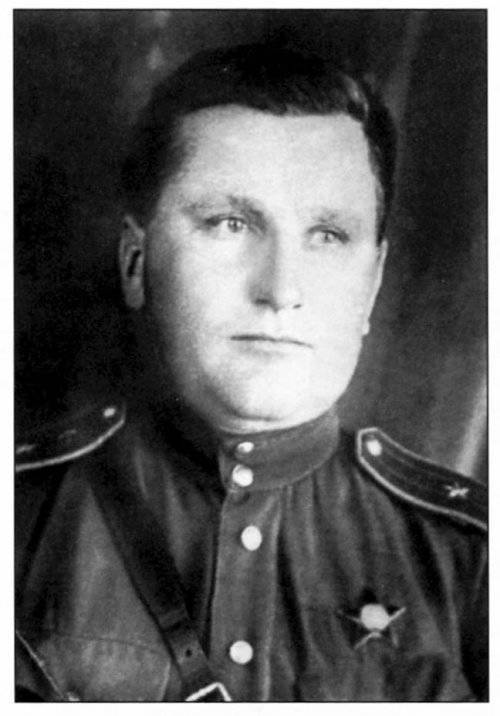
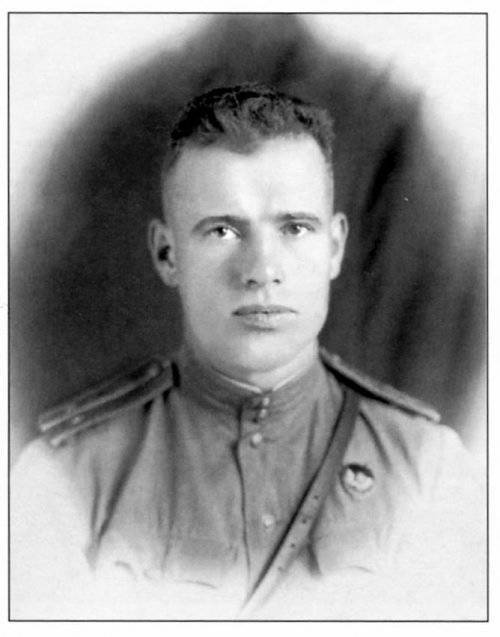
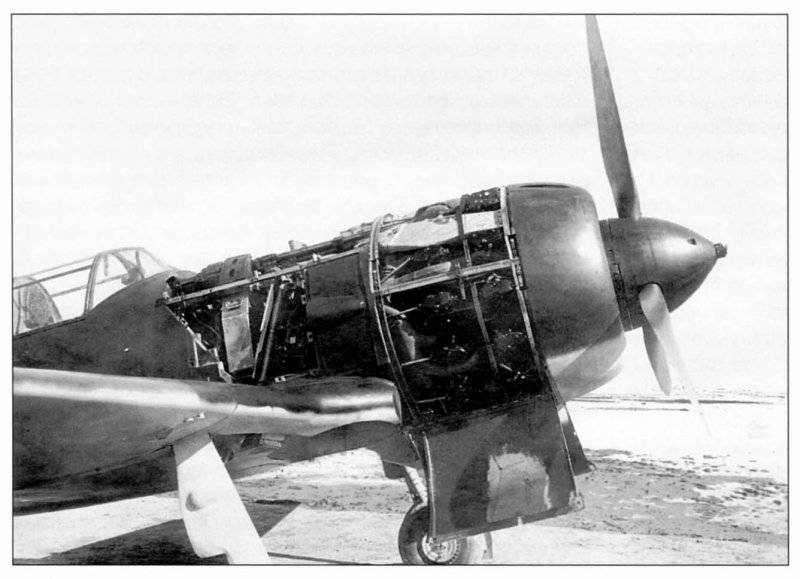
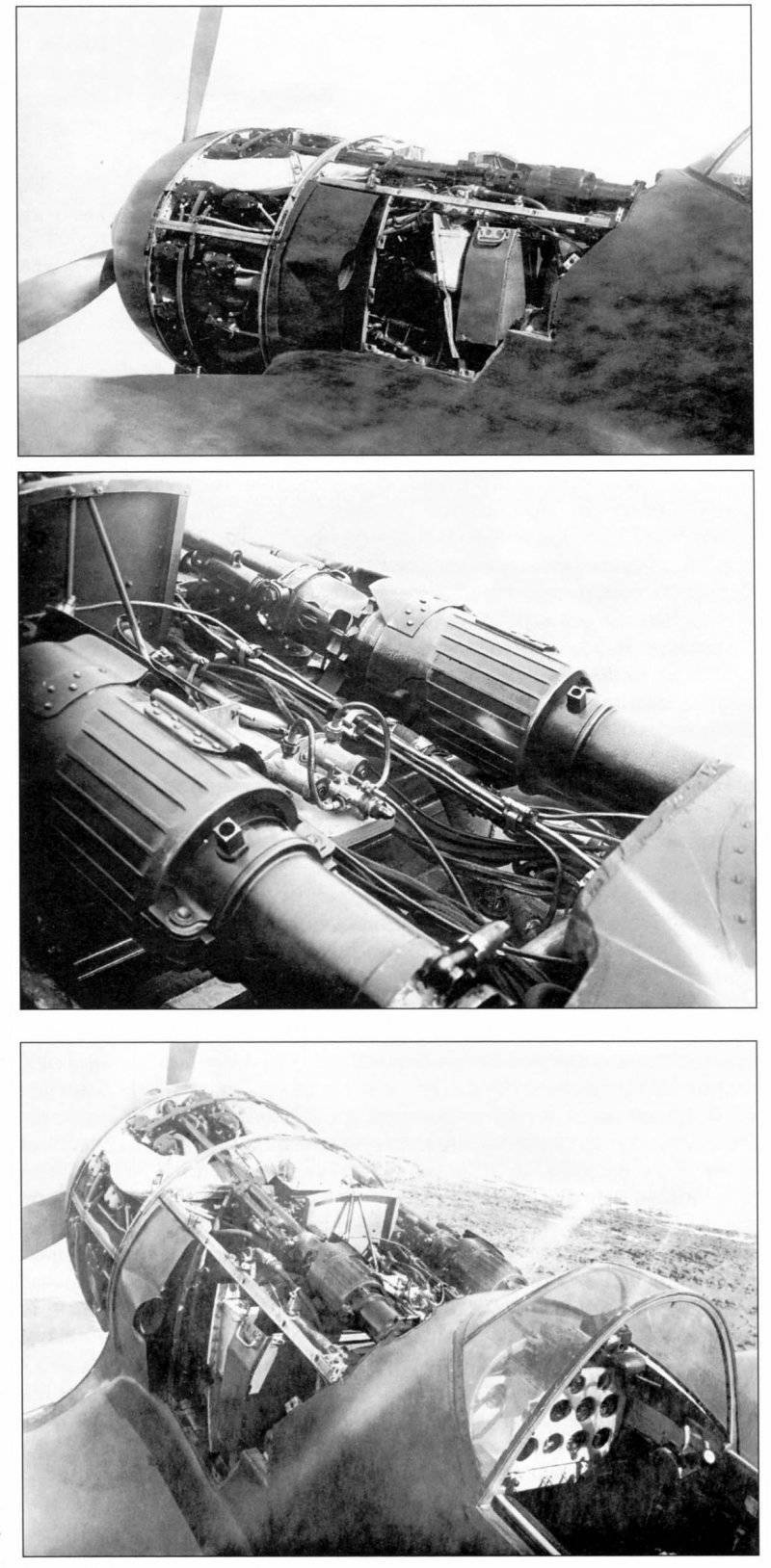
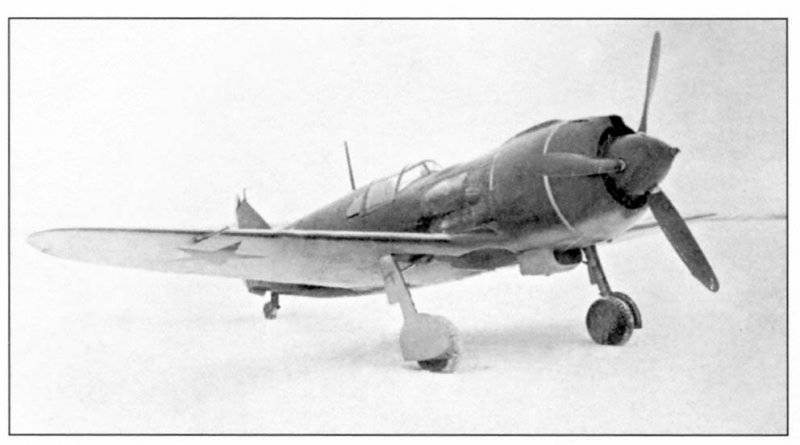
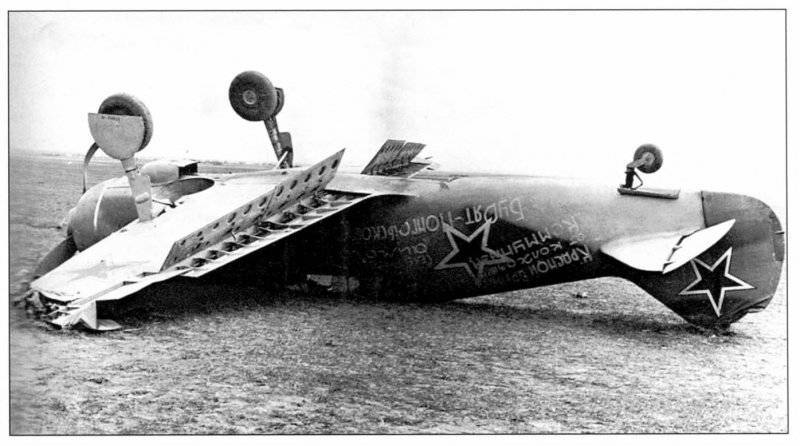
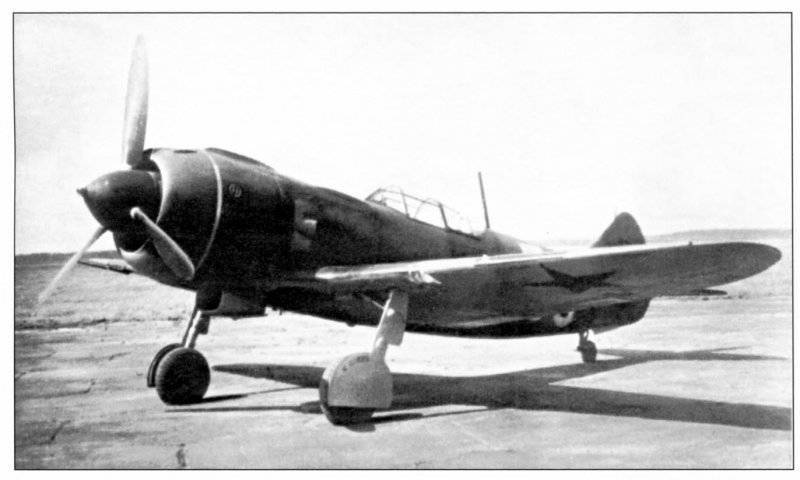
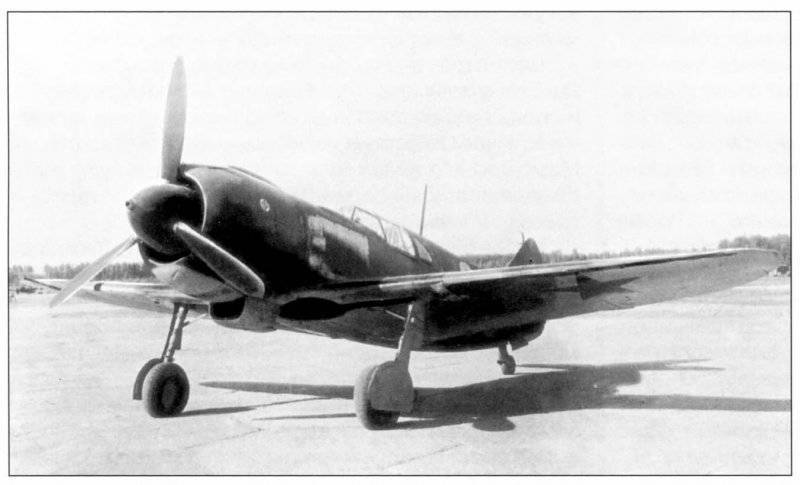
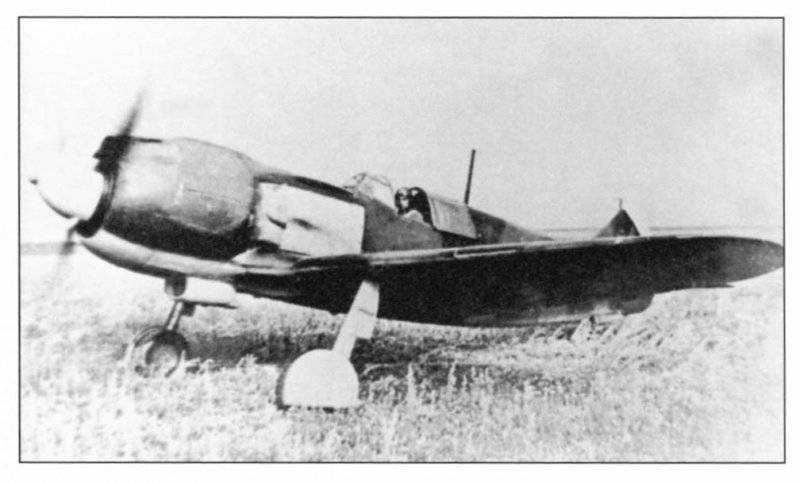
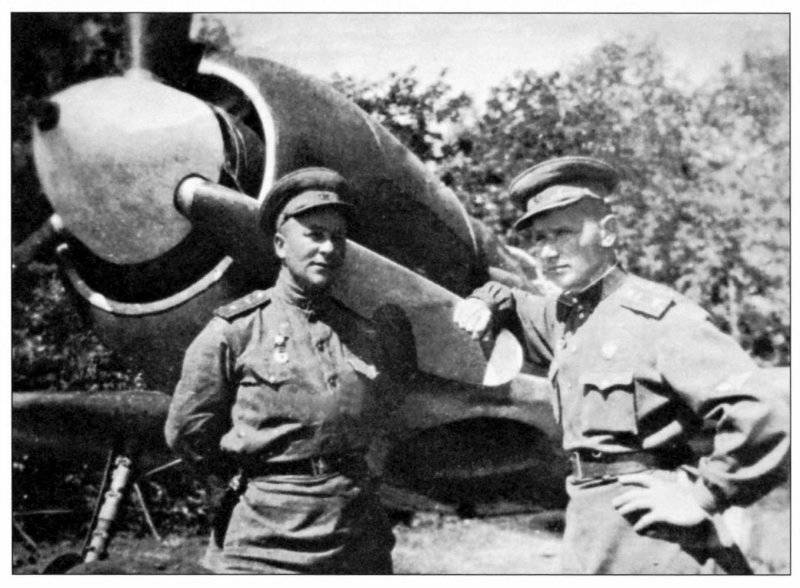
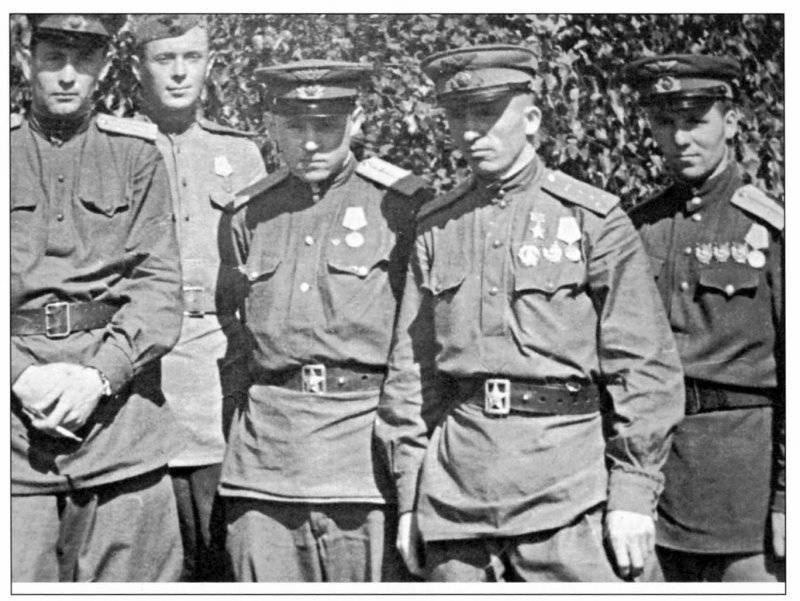
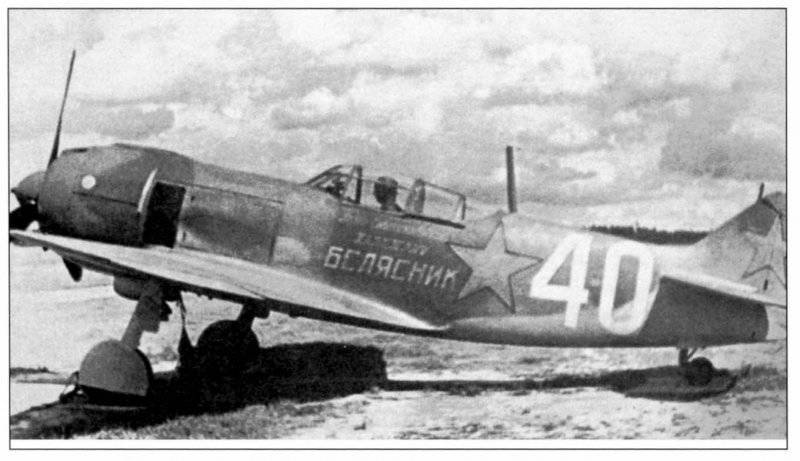
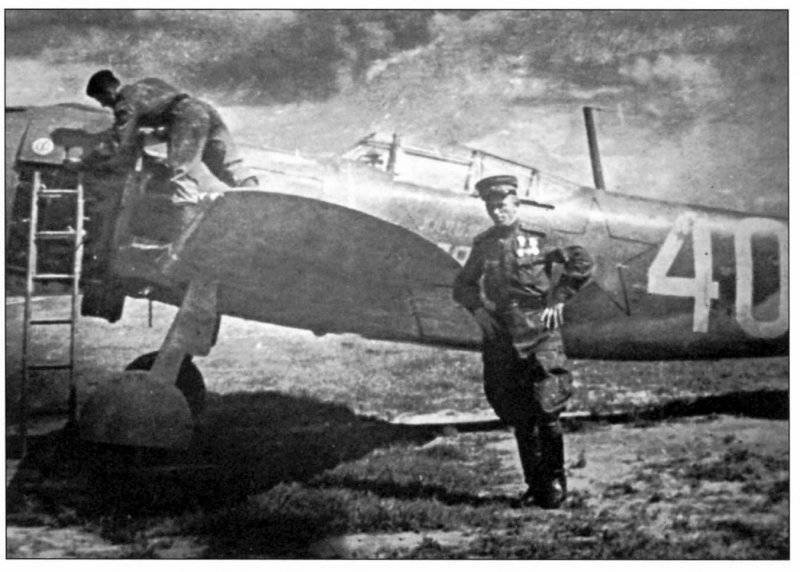
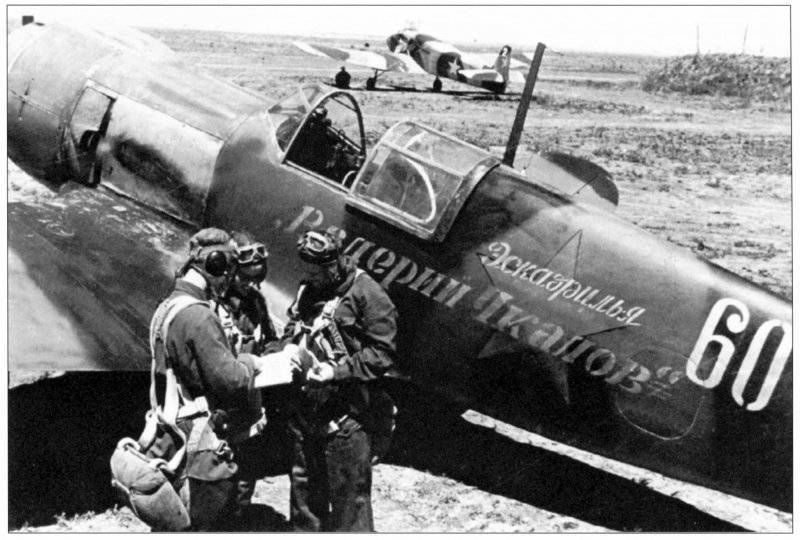
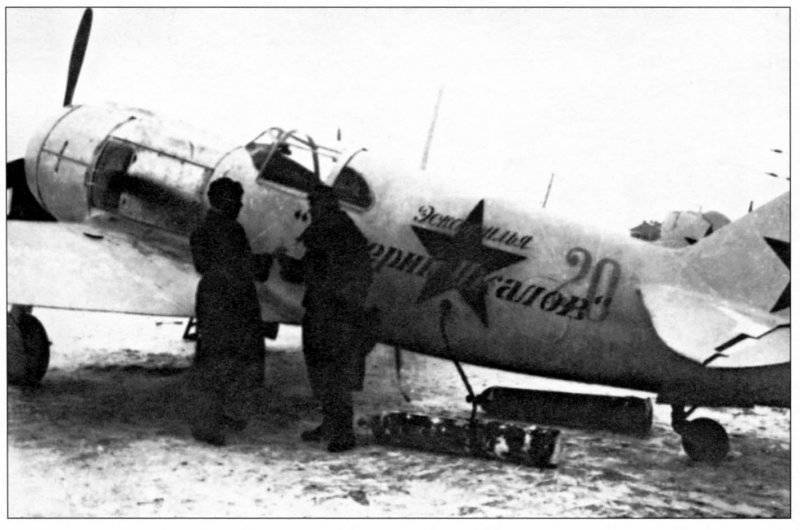
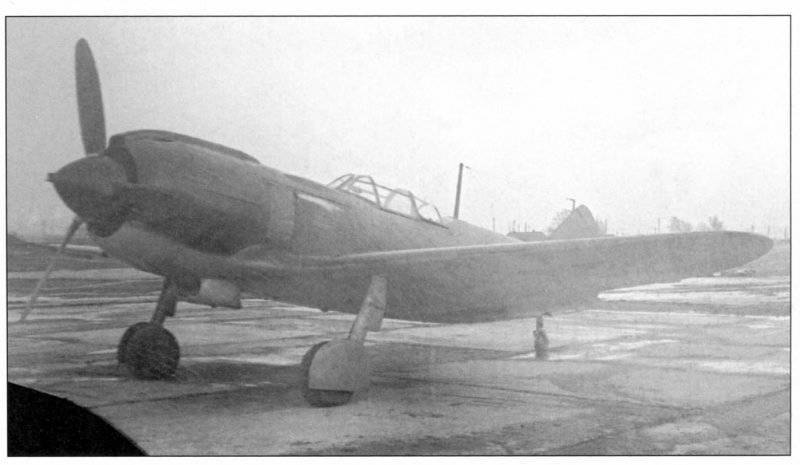
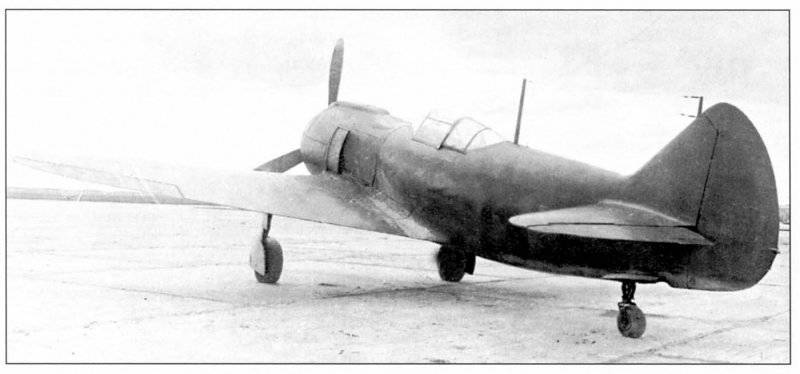
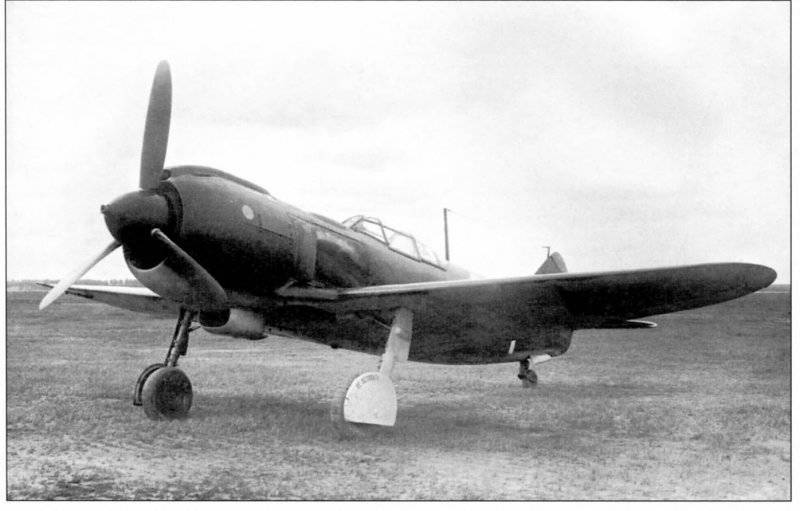
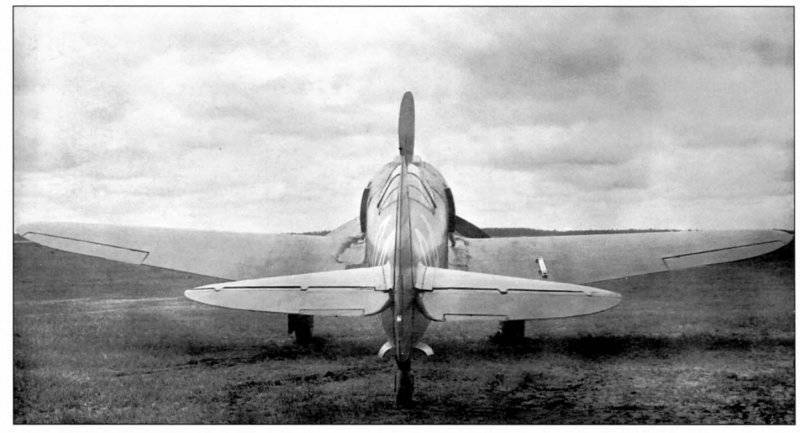
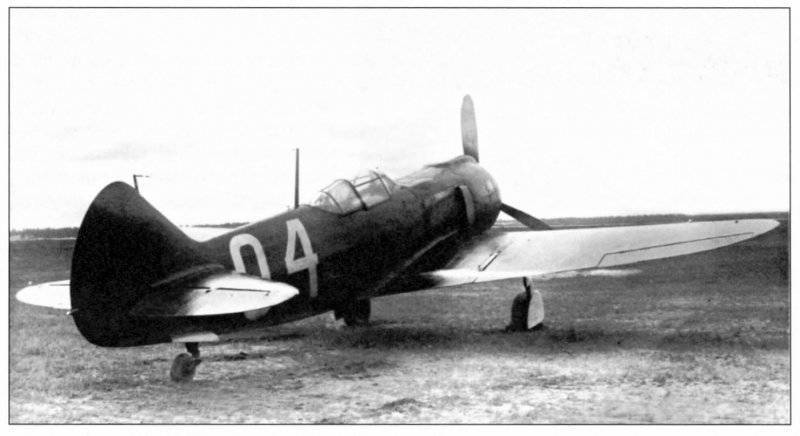
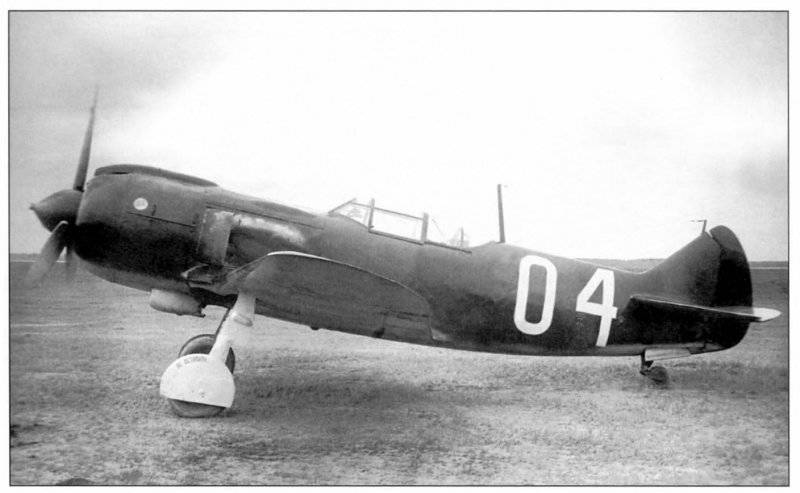
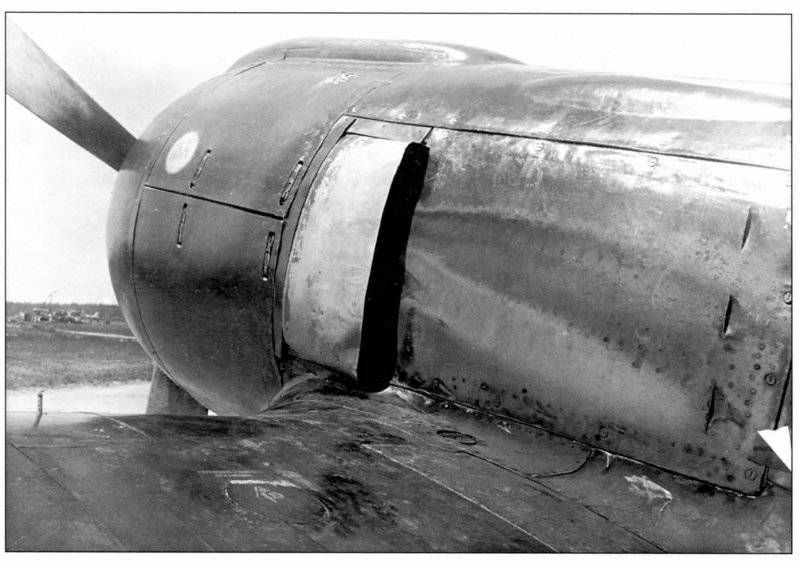
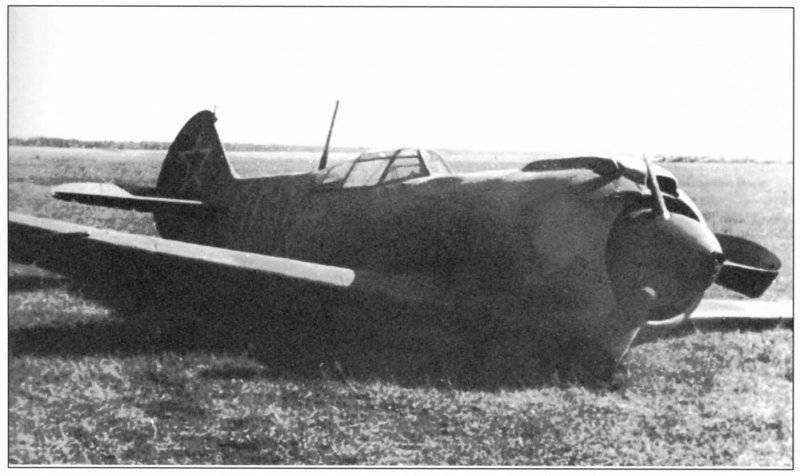
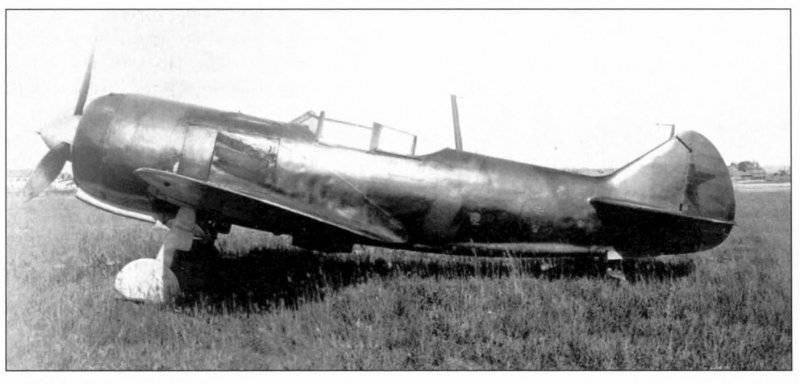
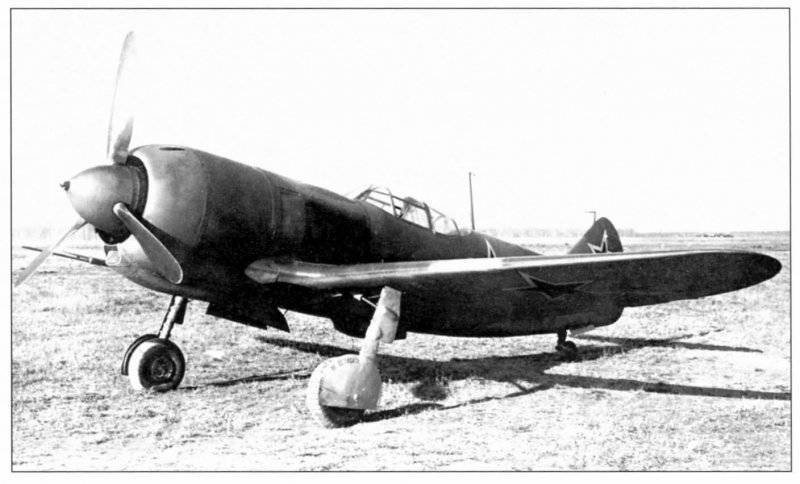
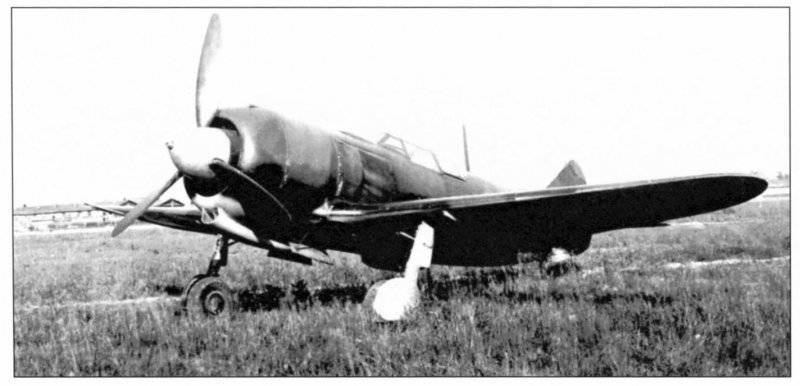
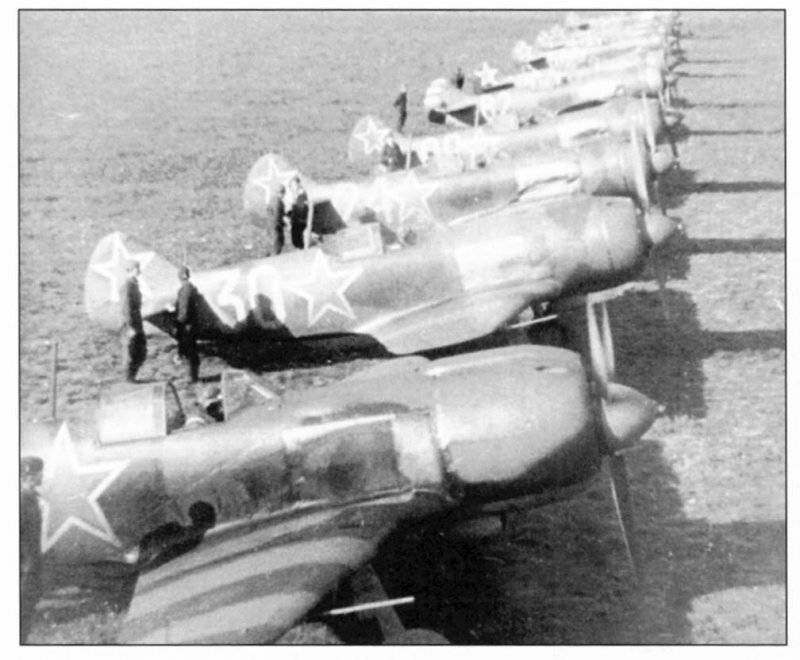
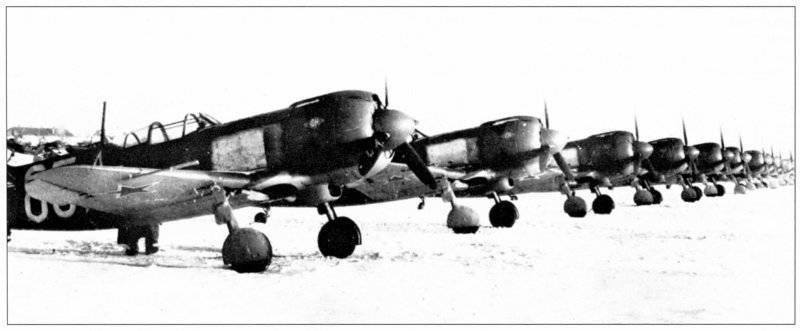
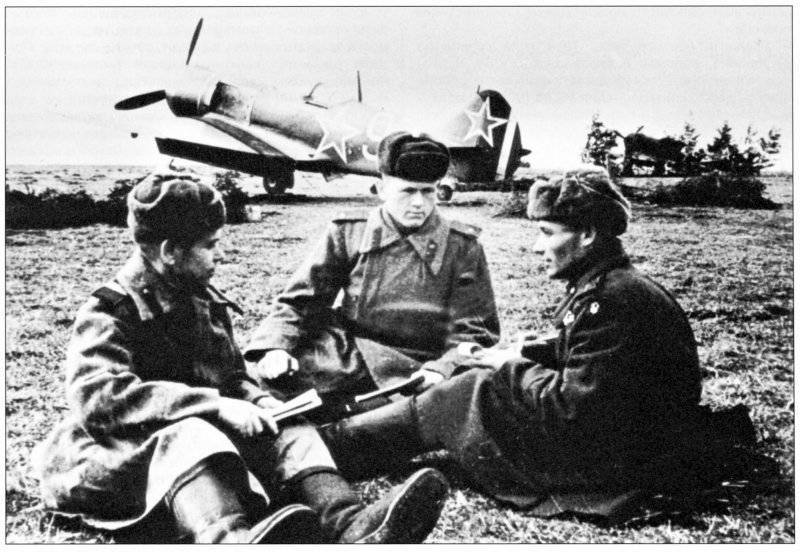
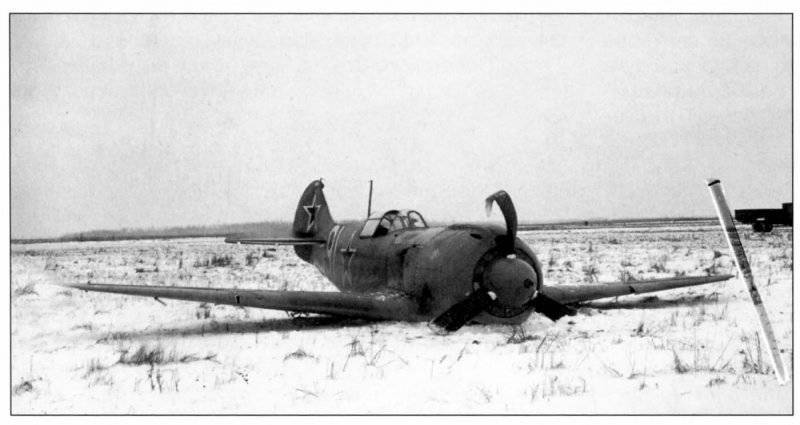
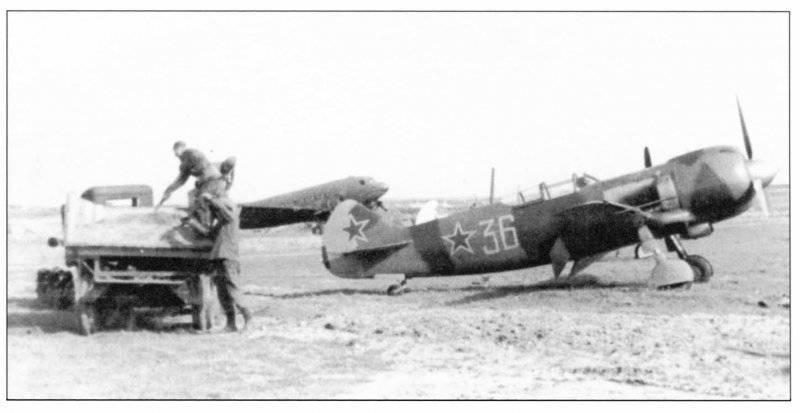
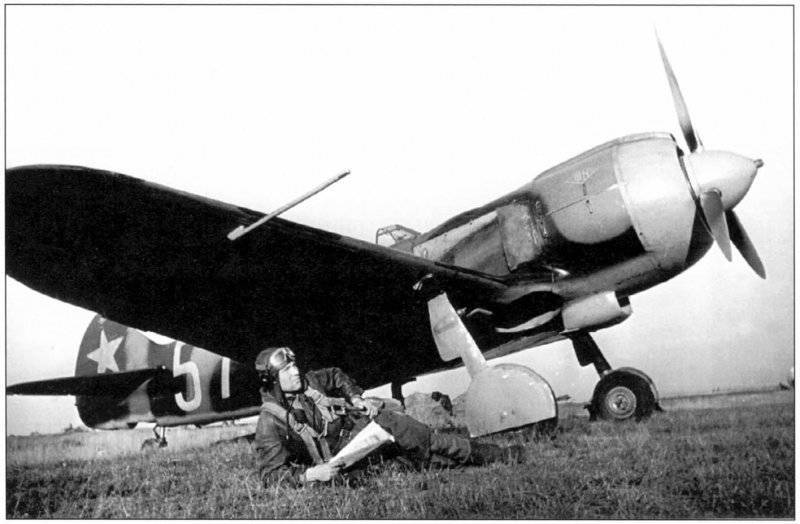
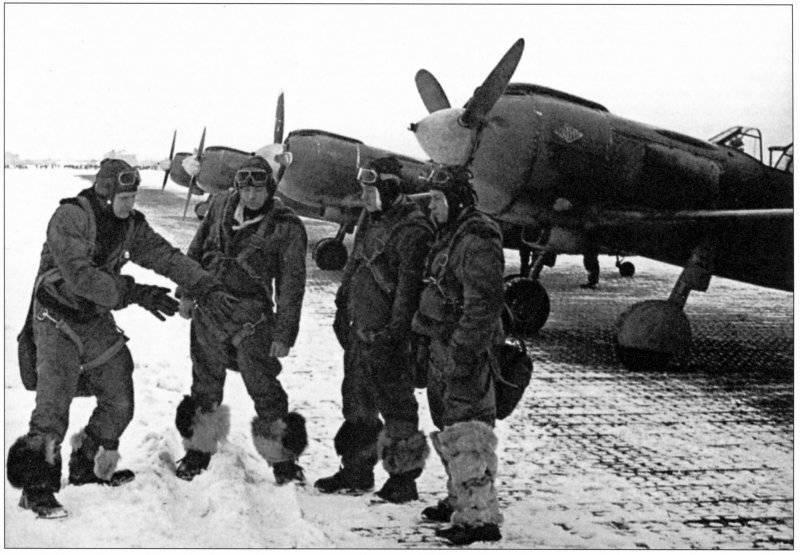
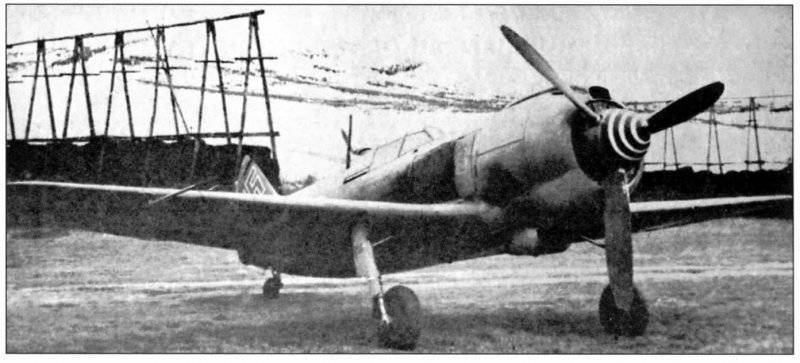
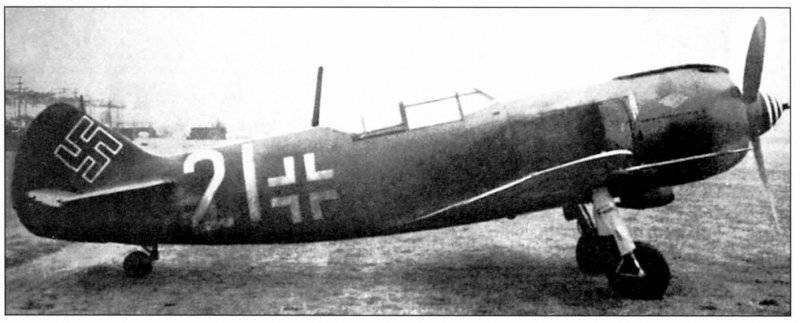
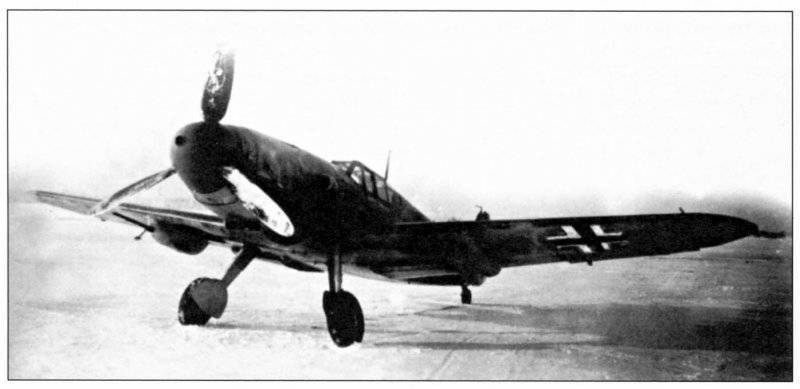
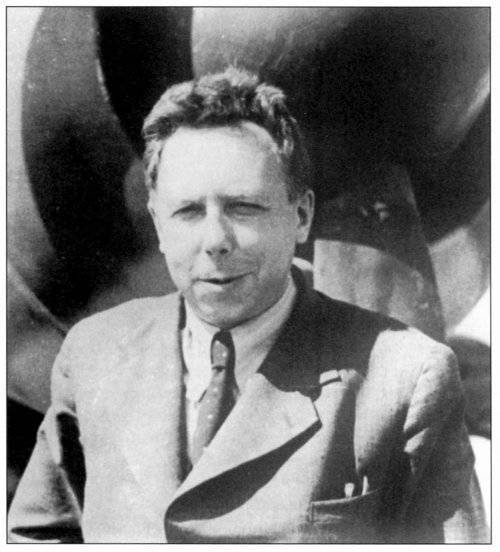
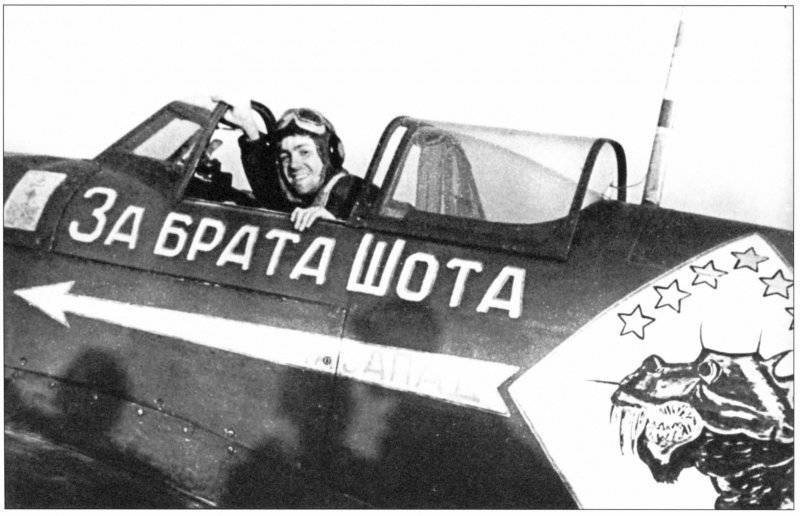
Information